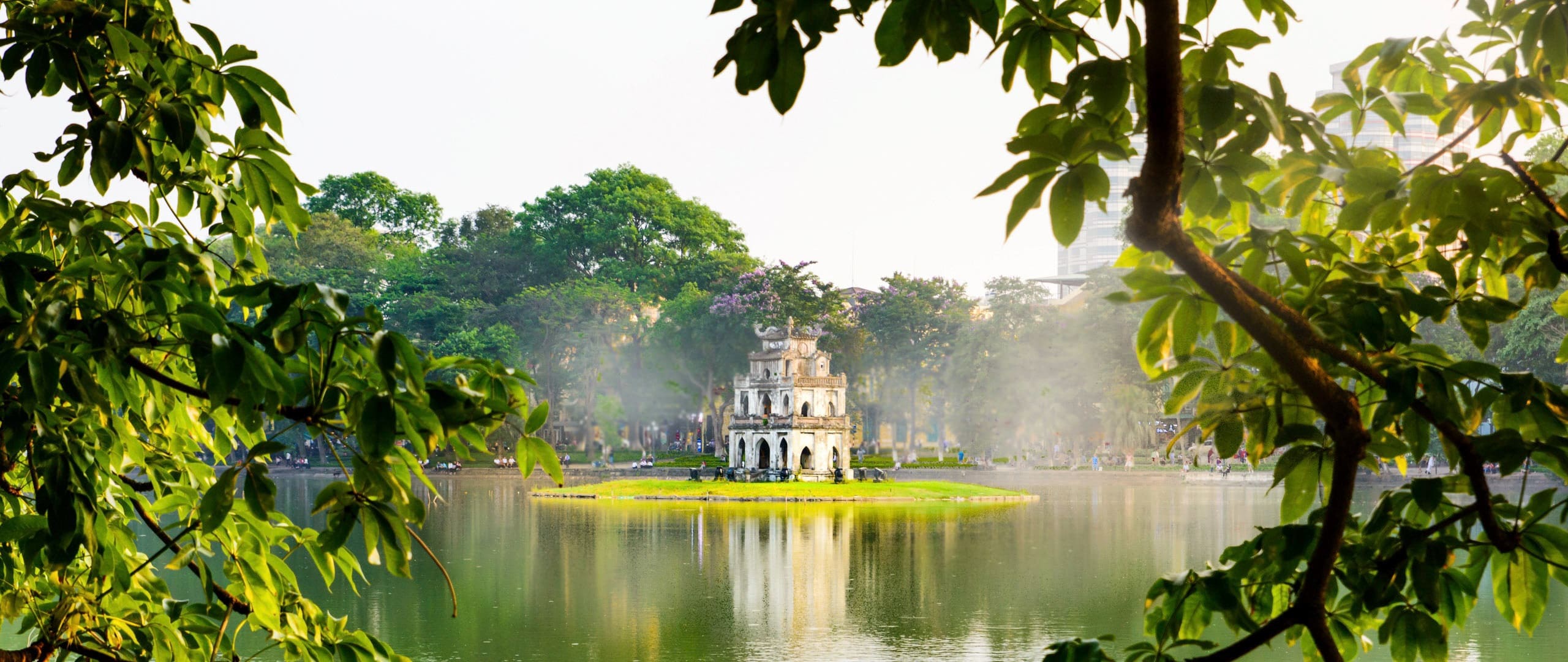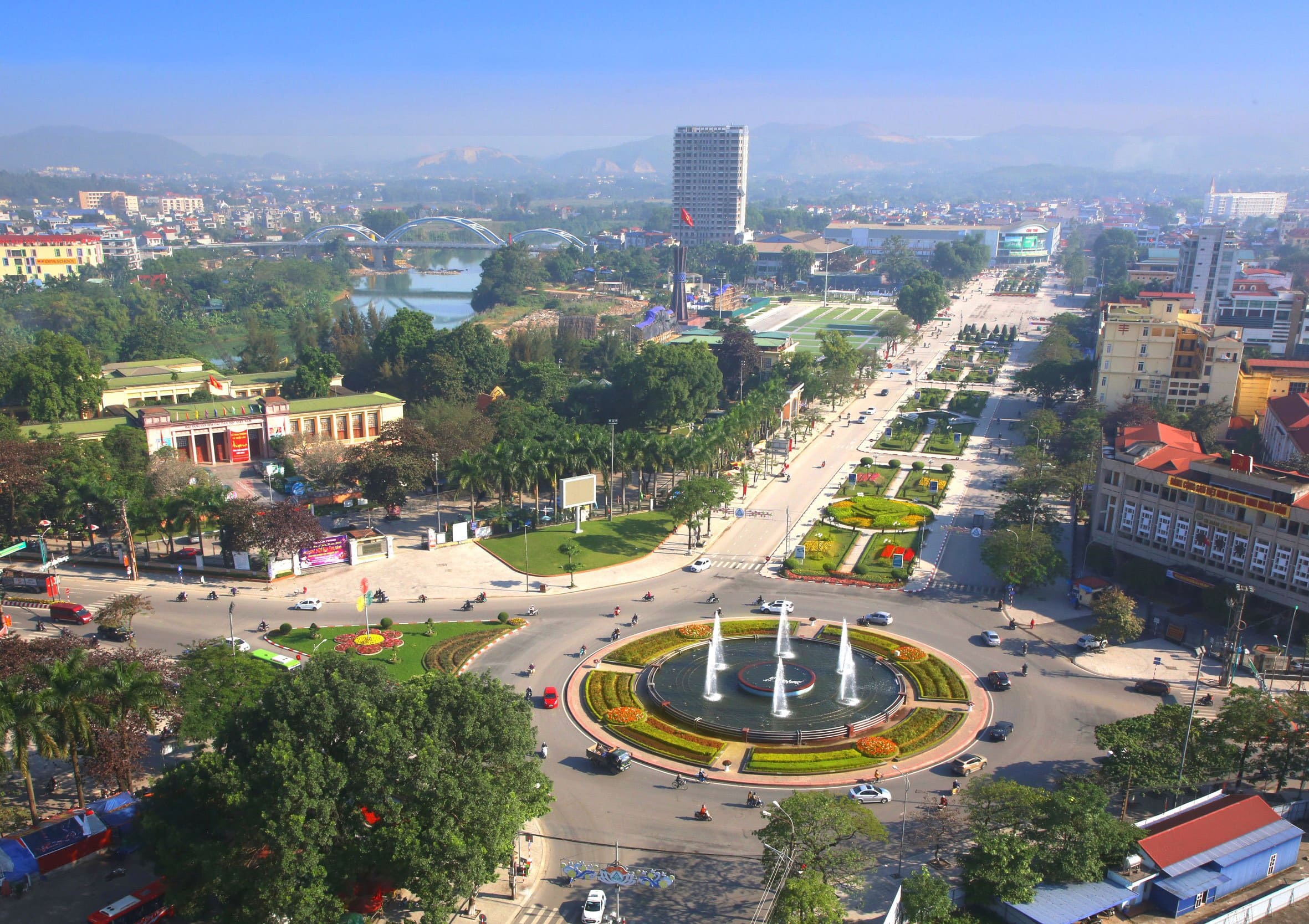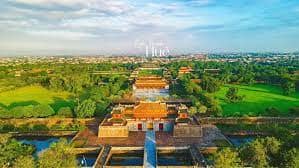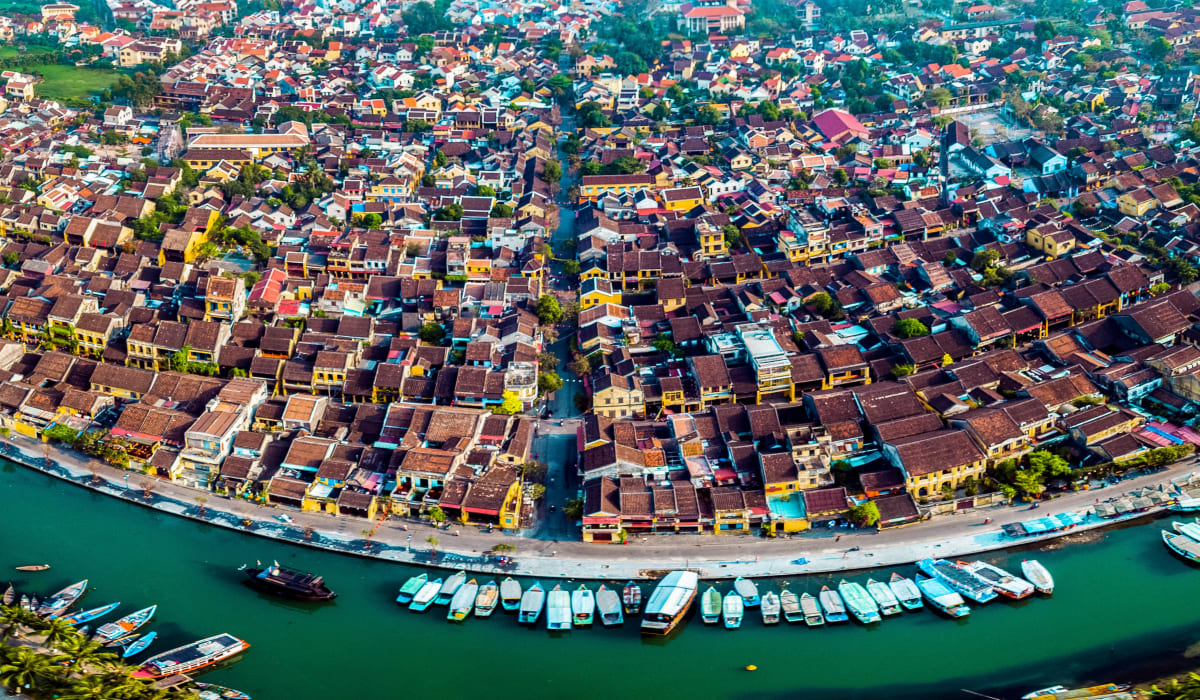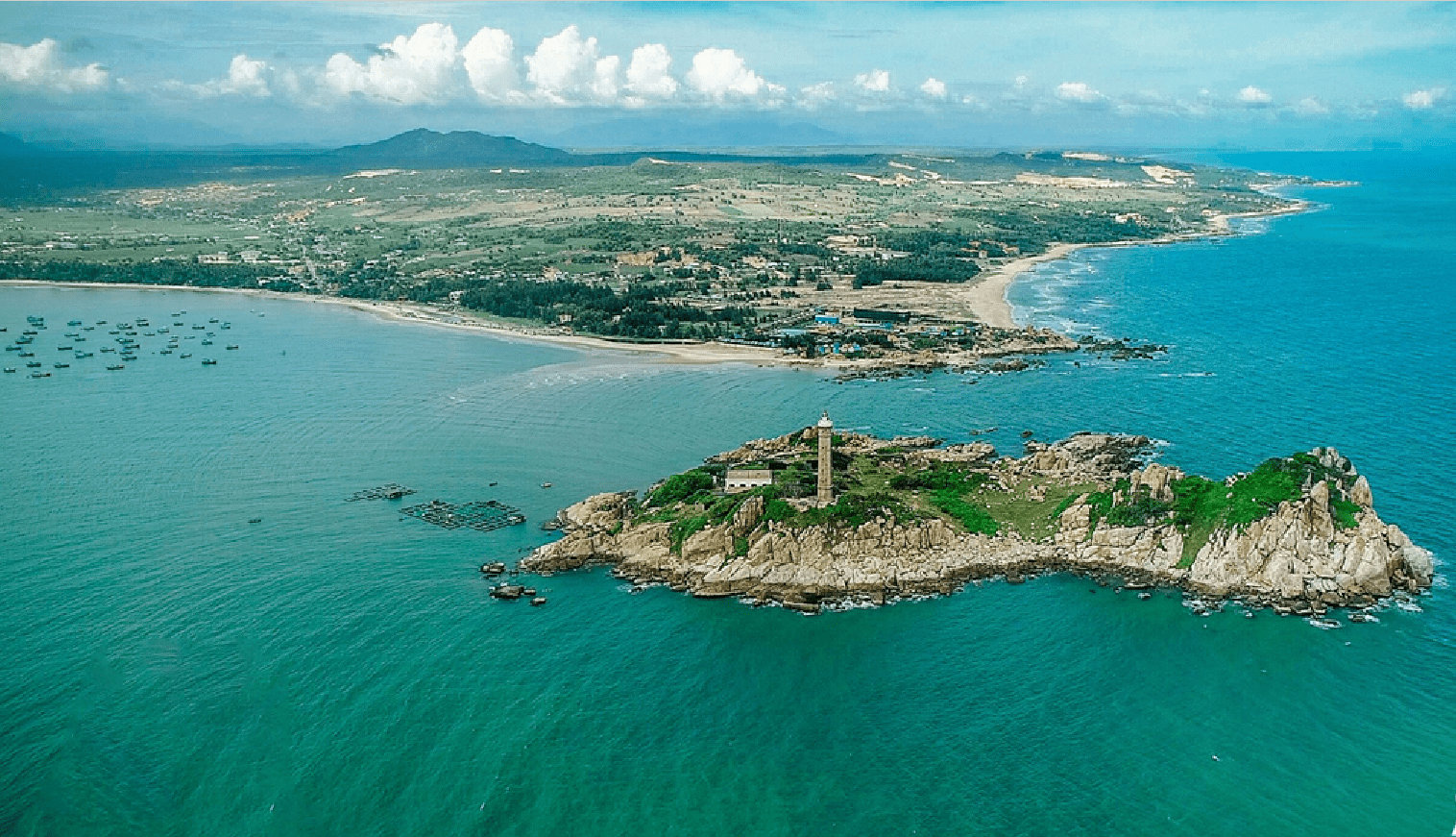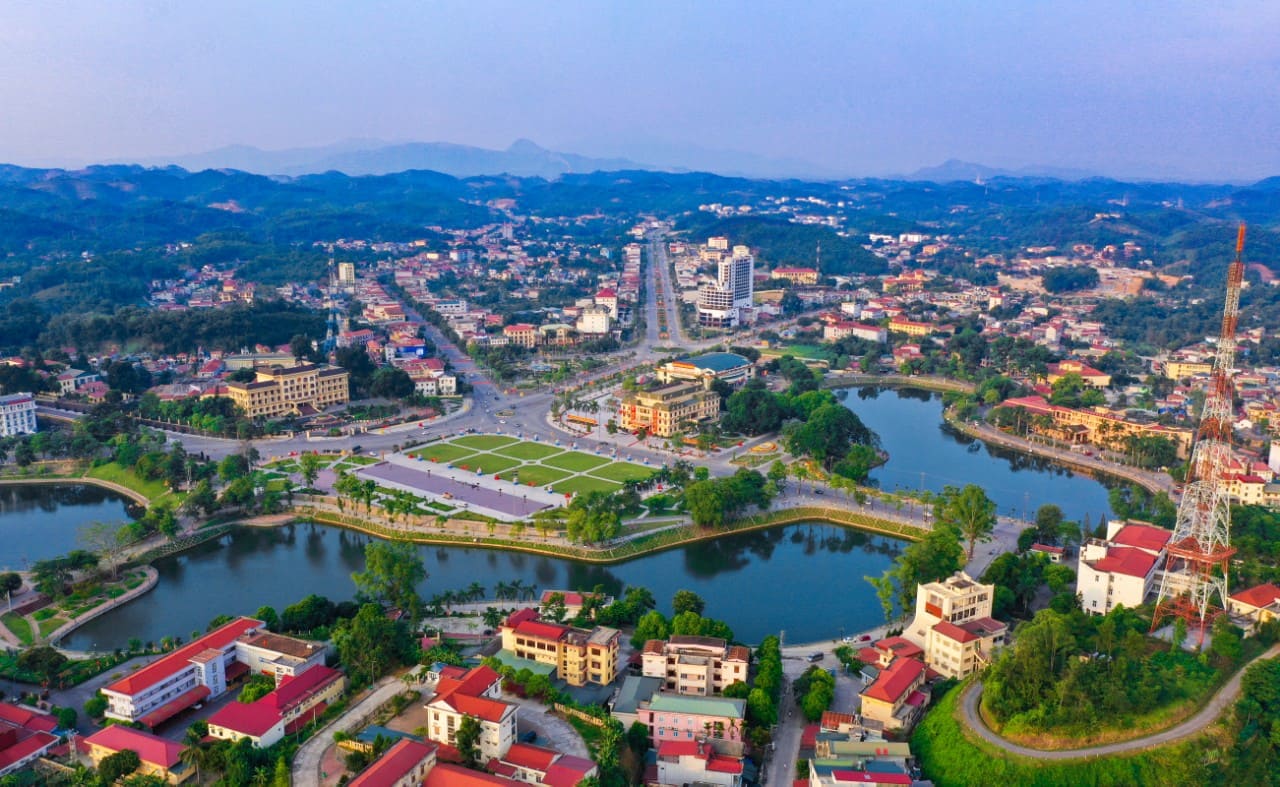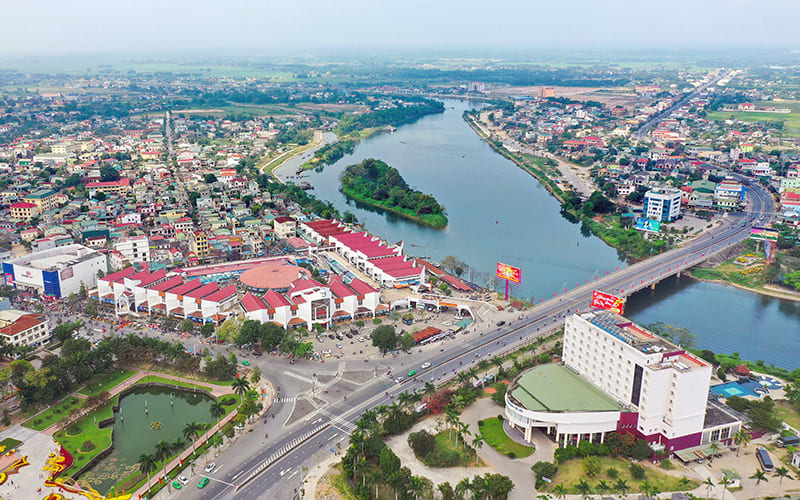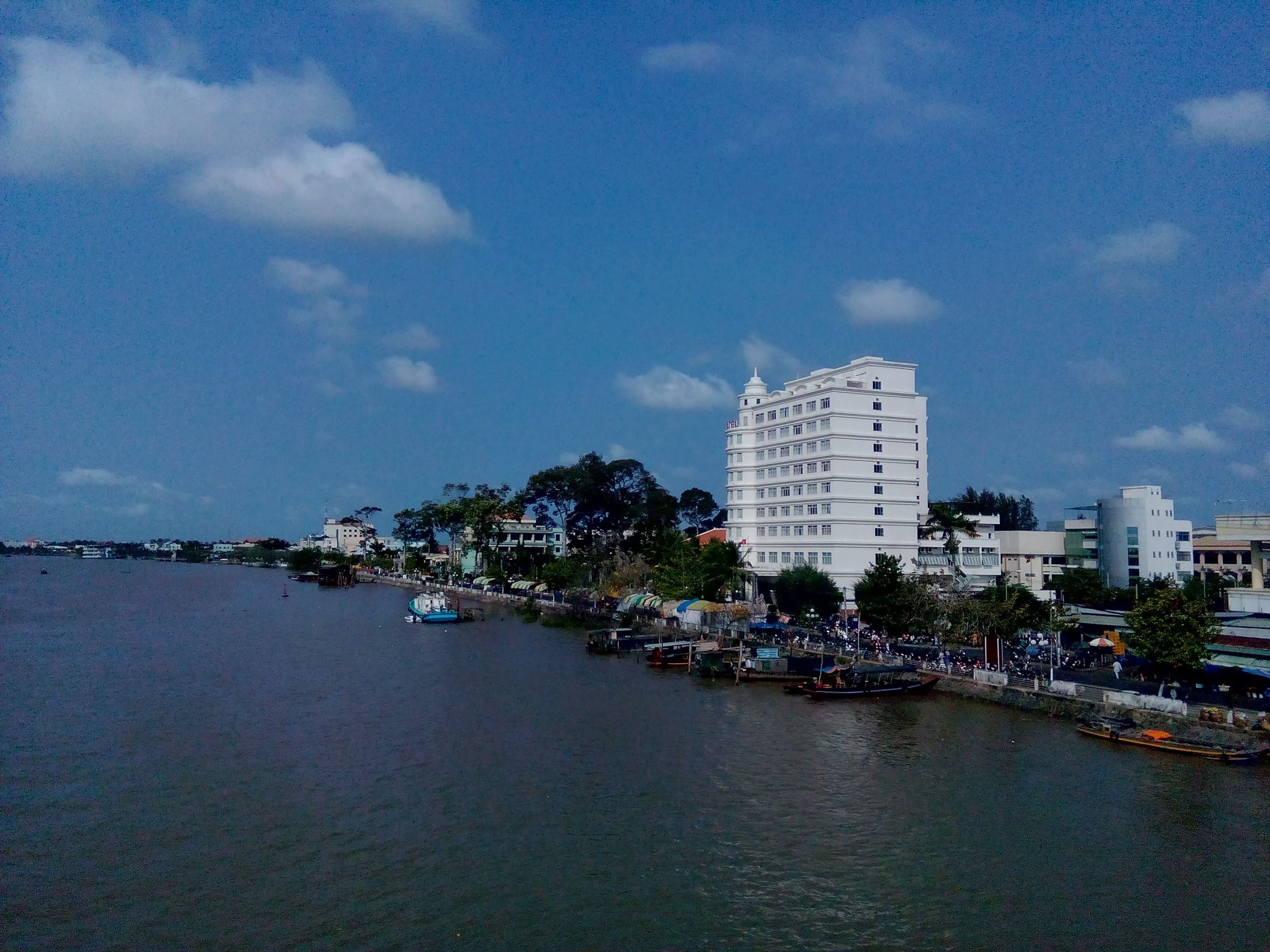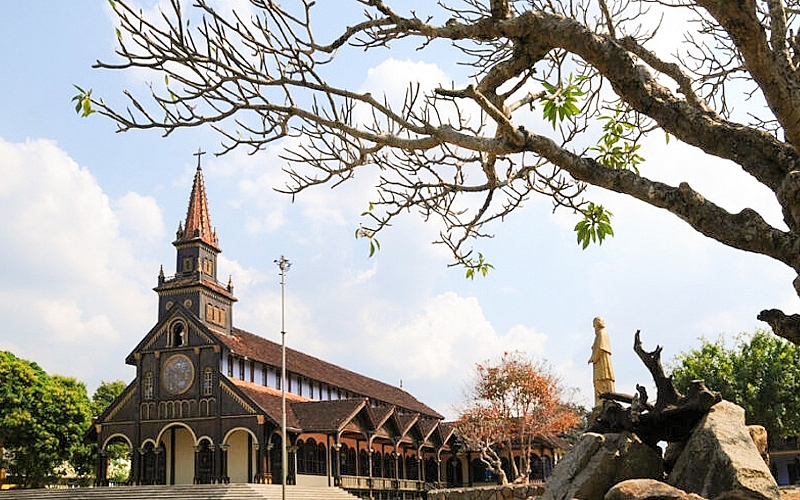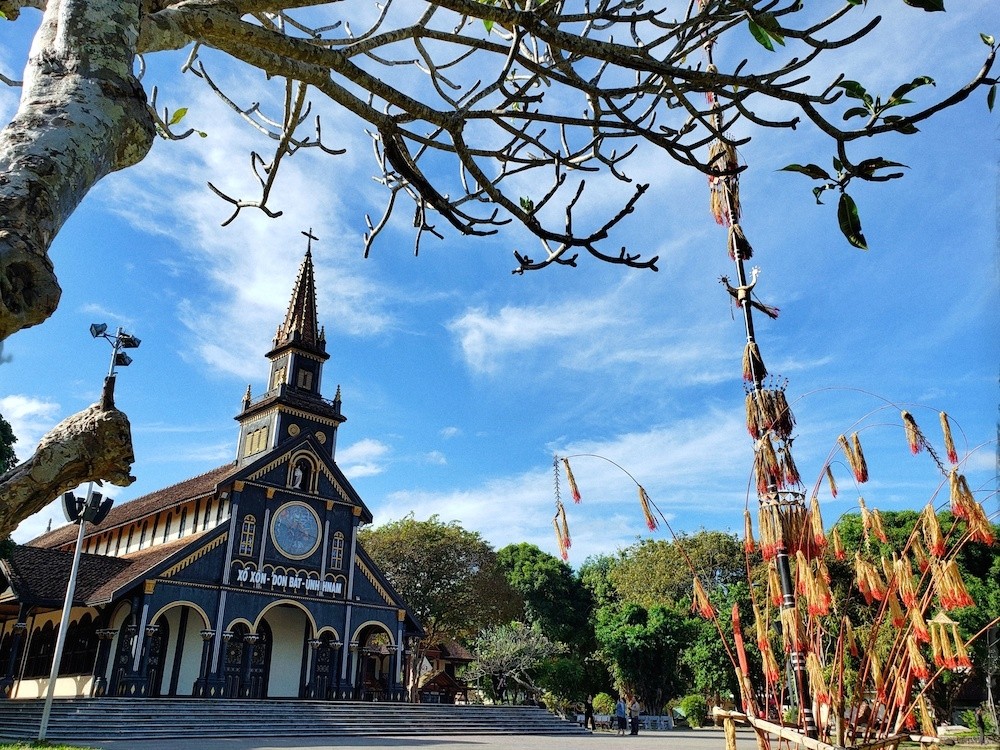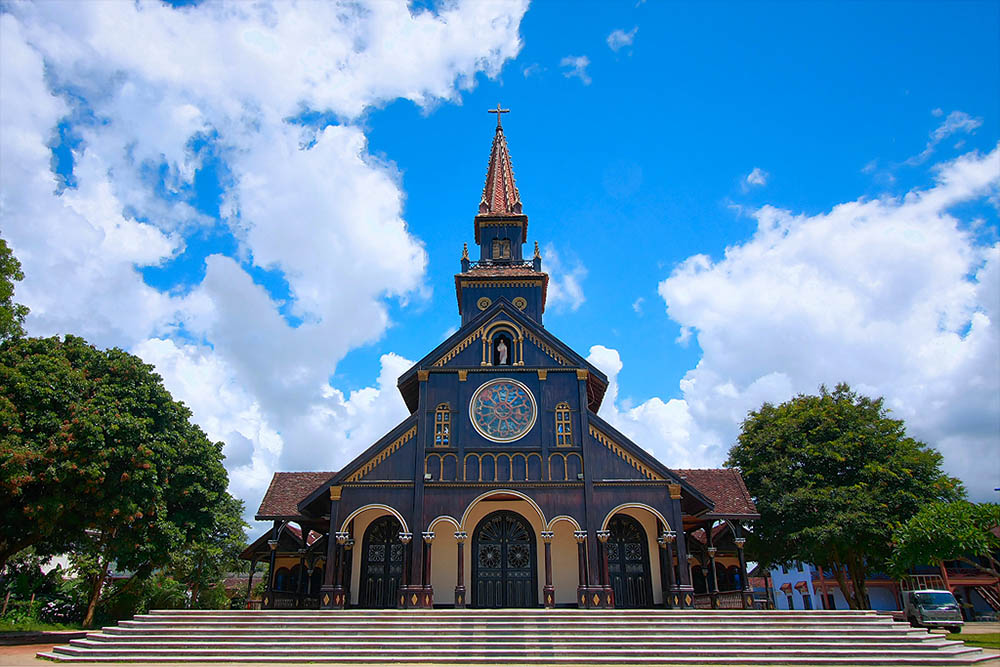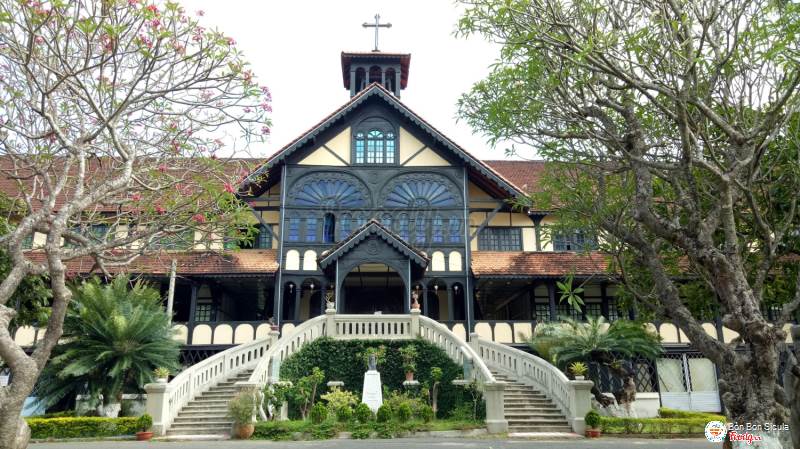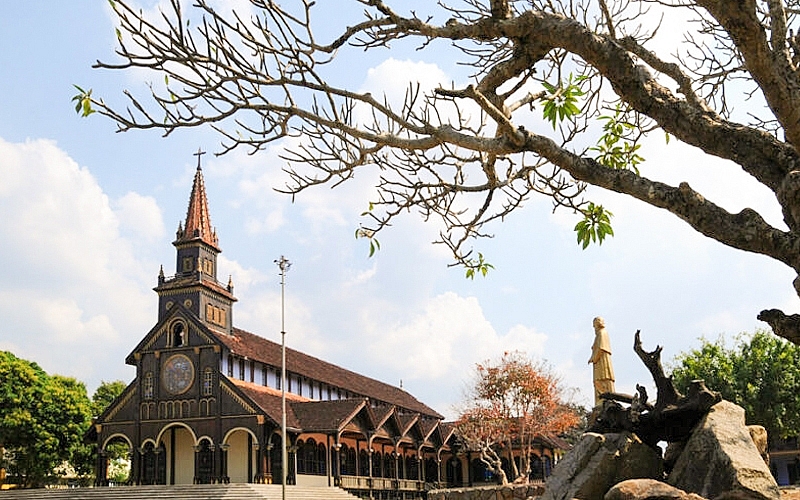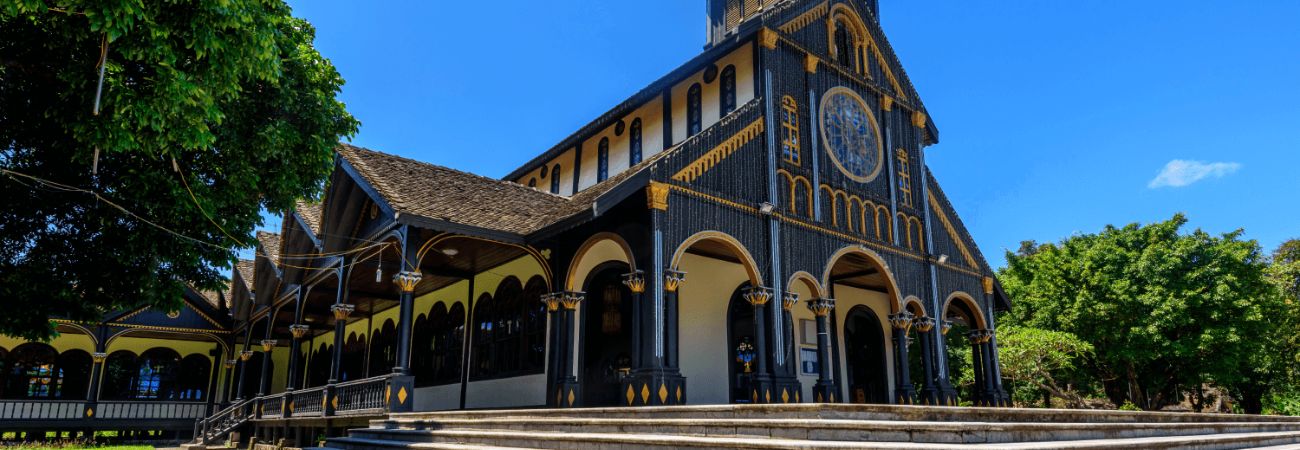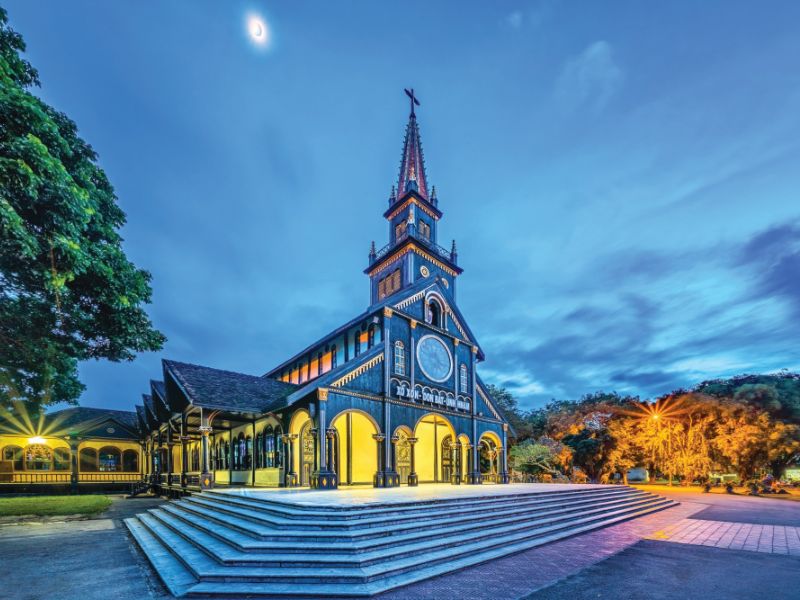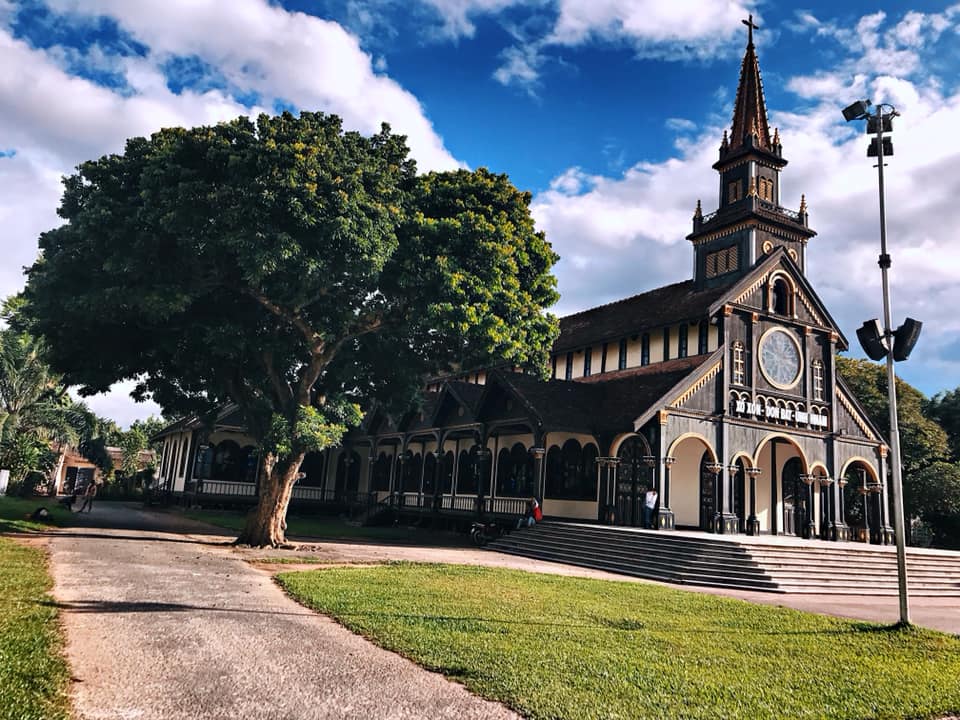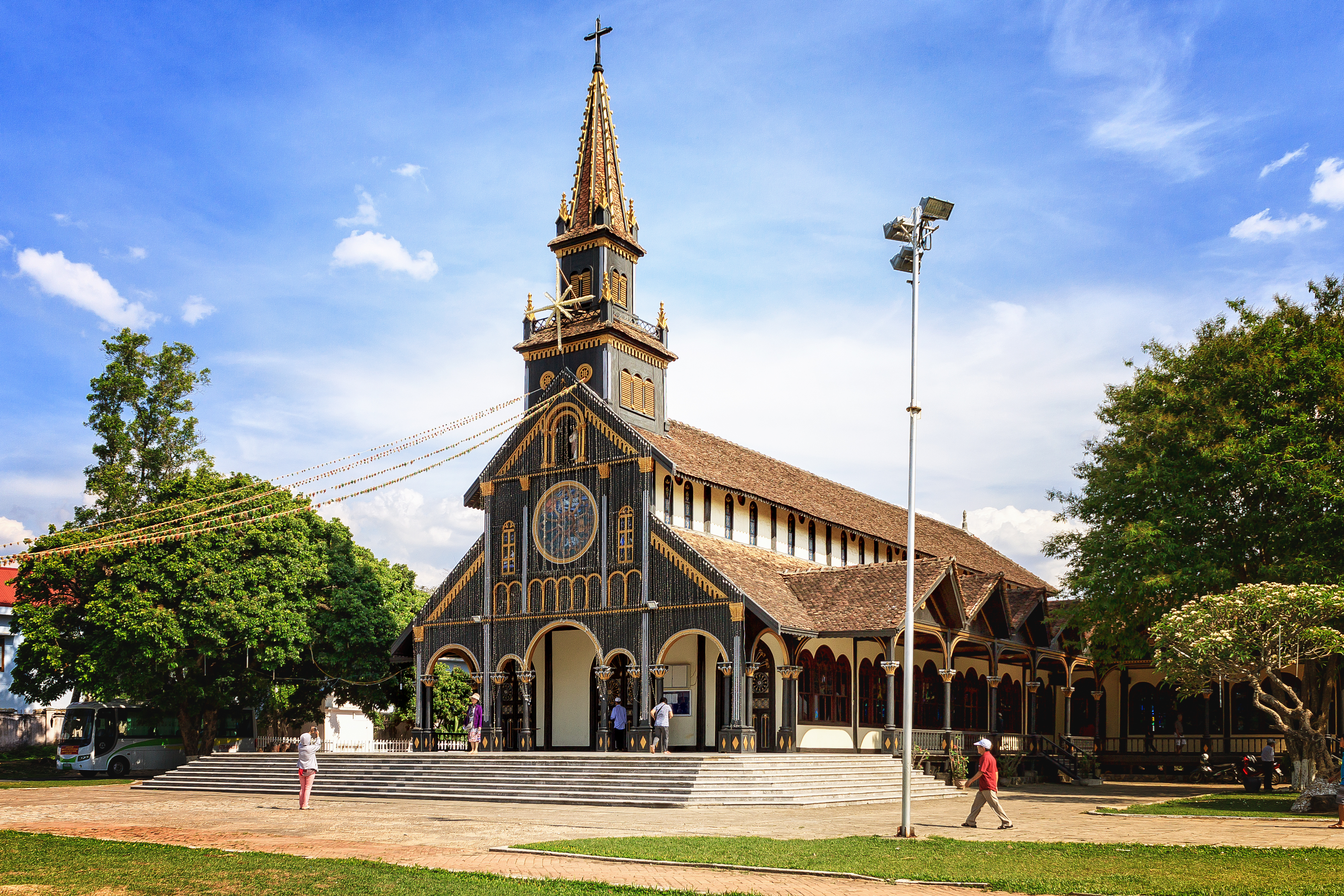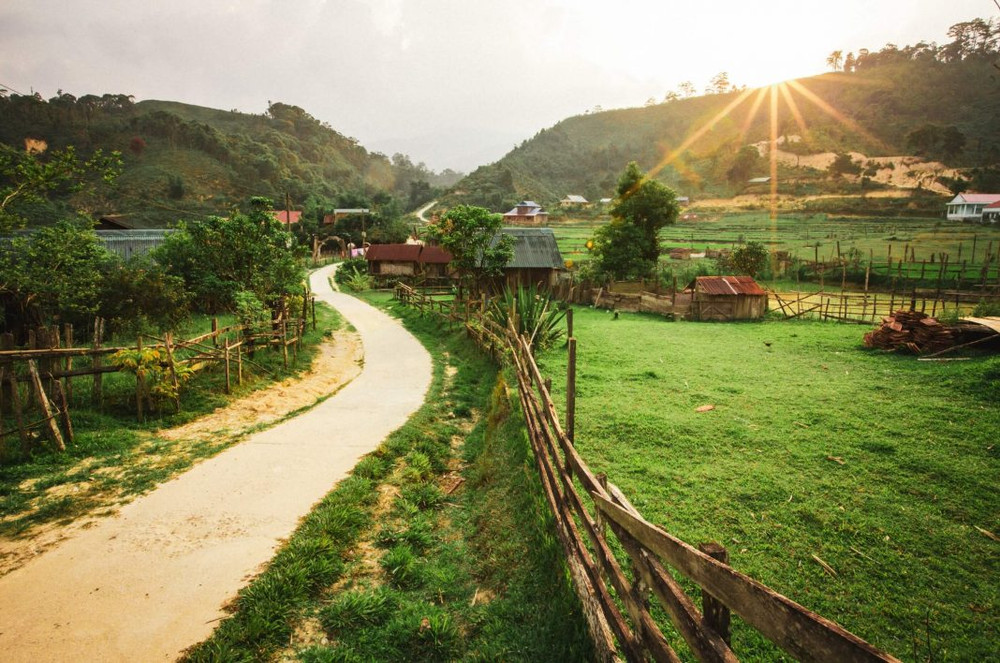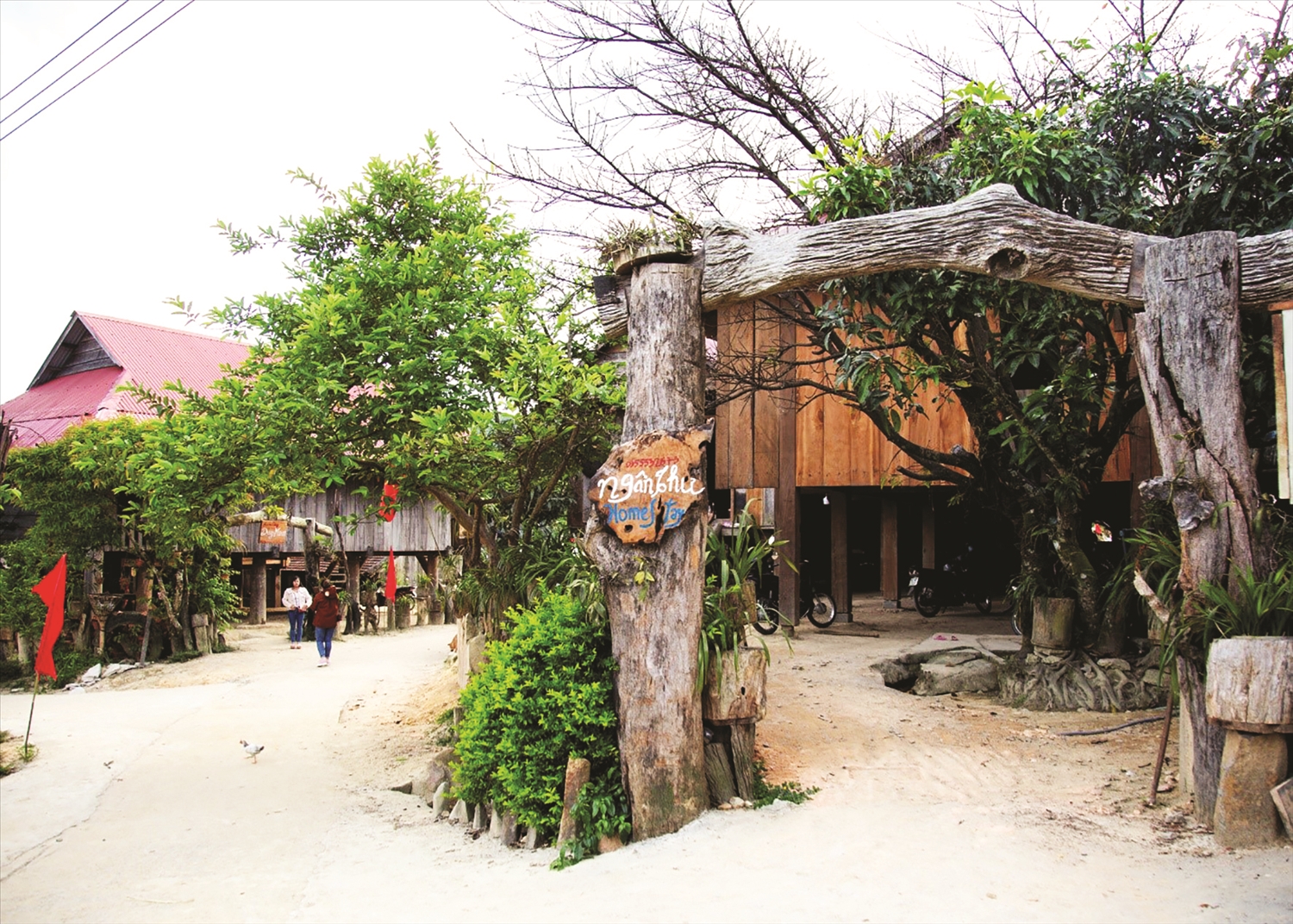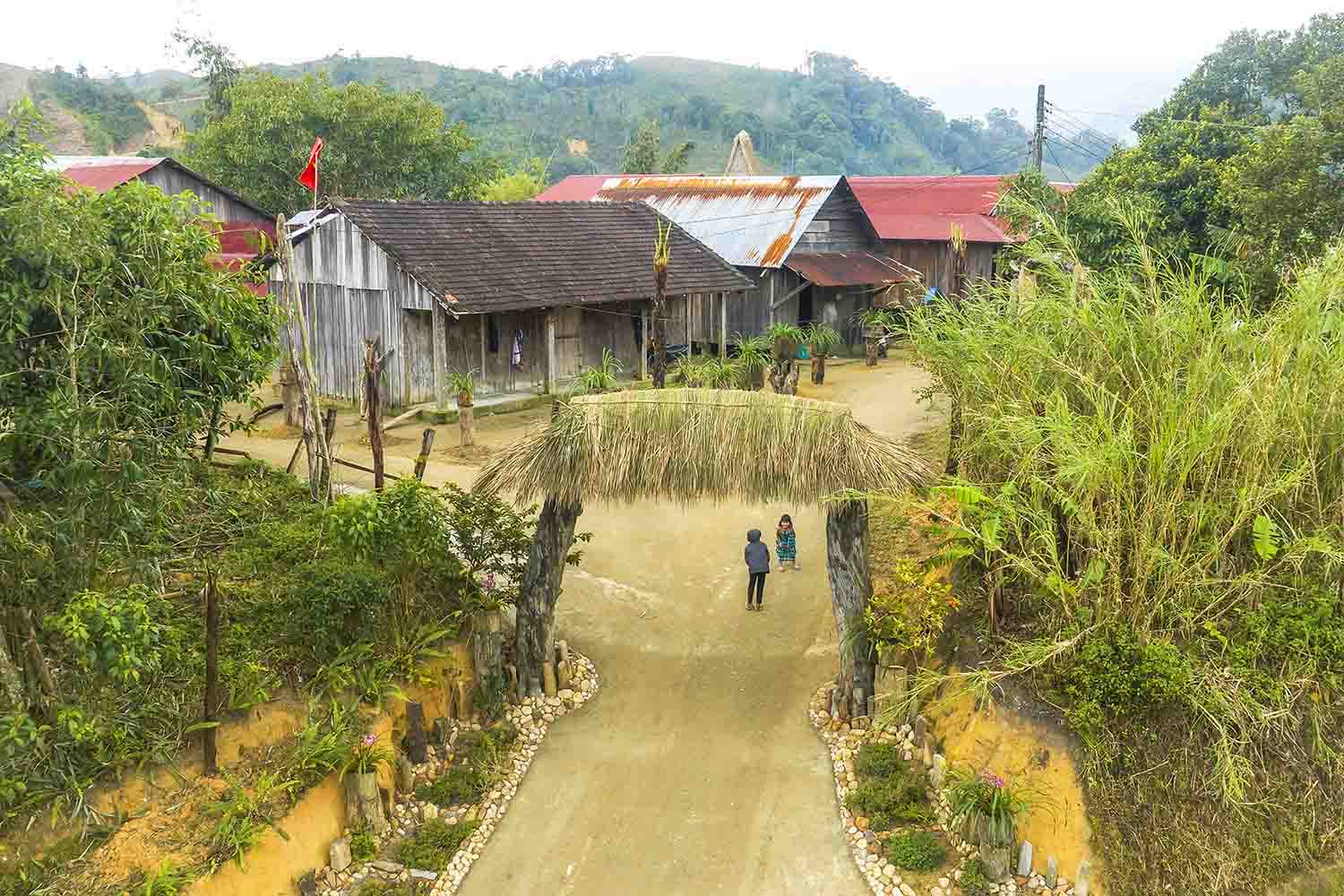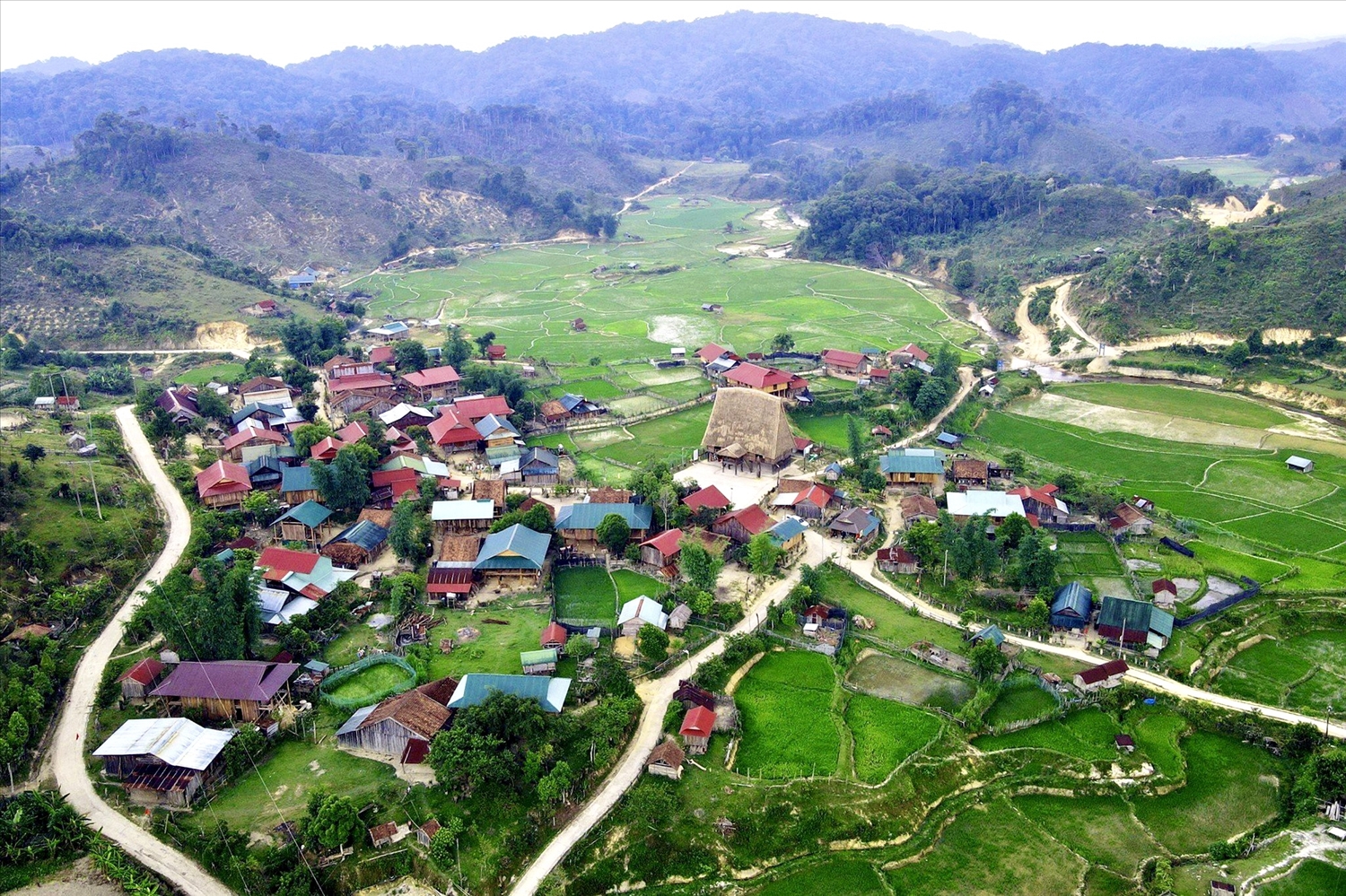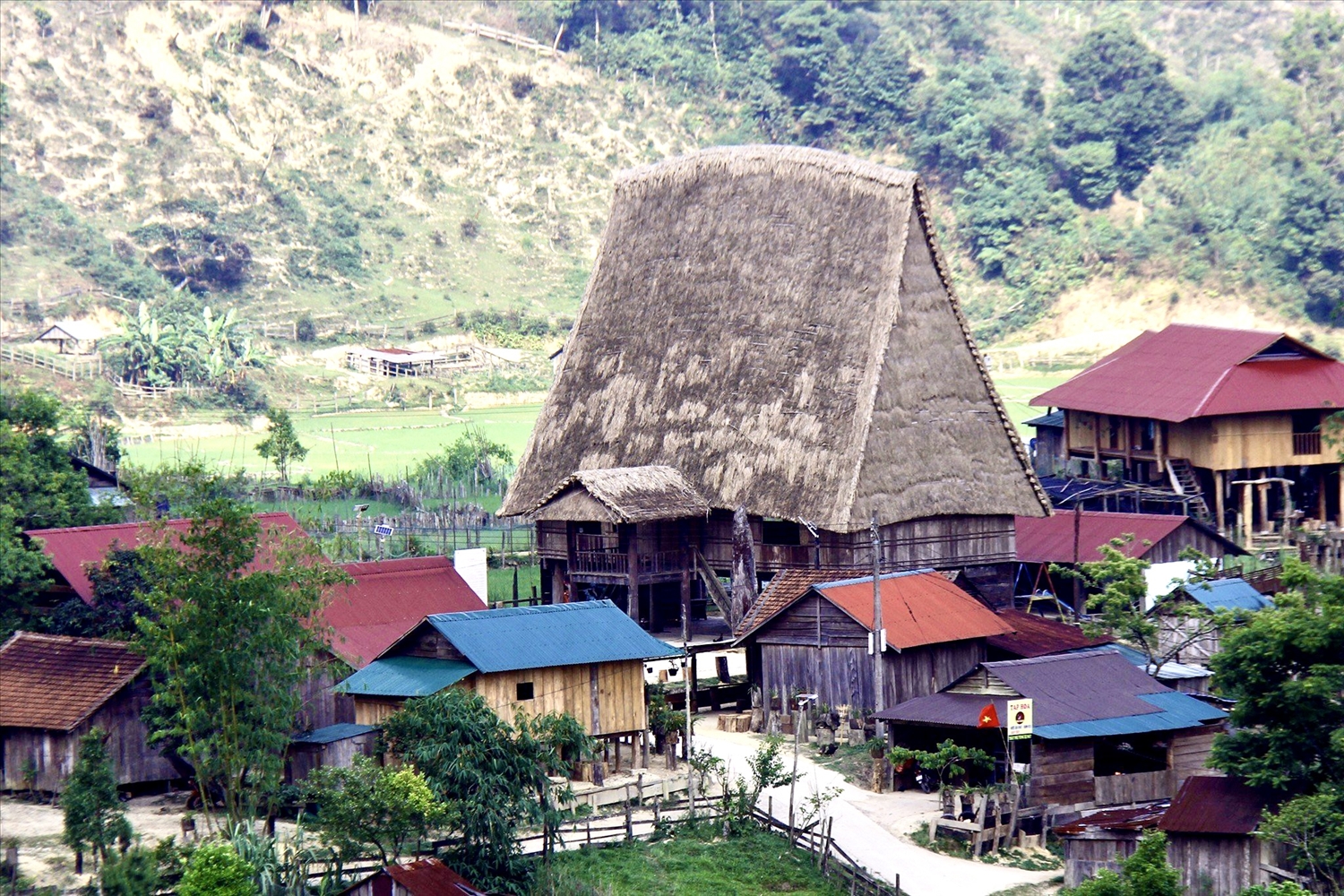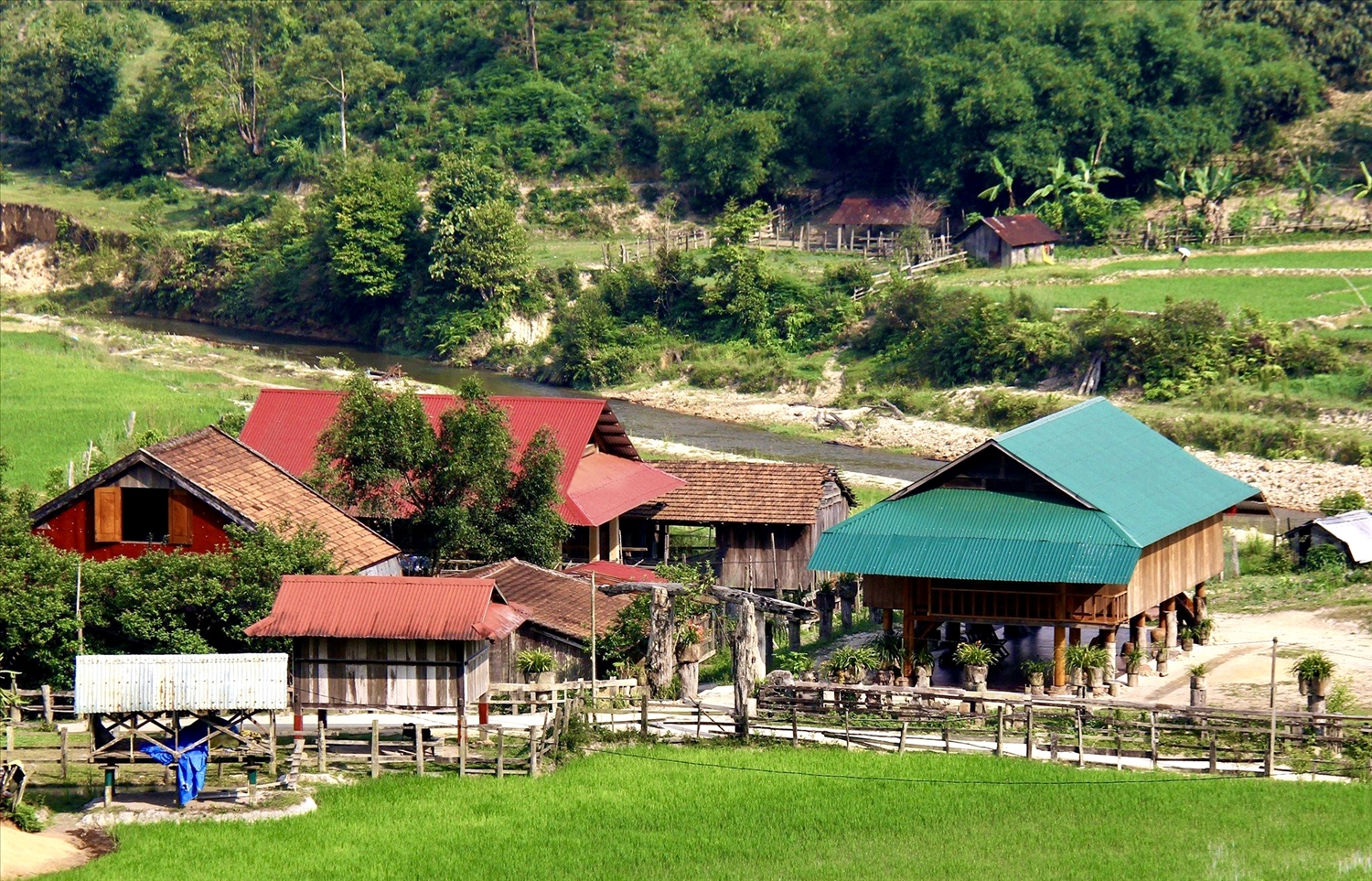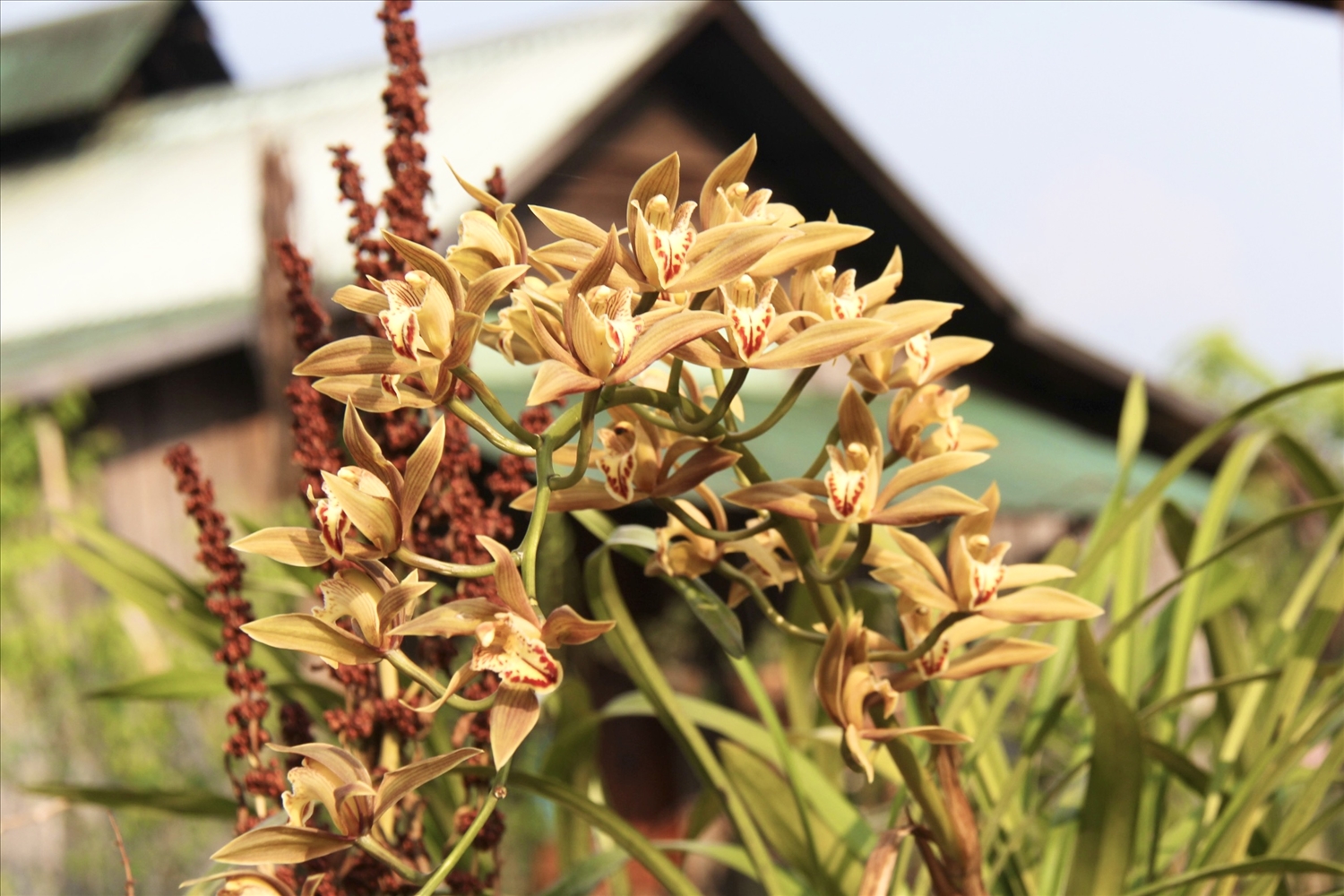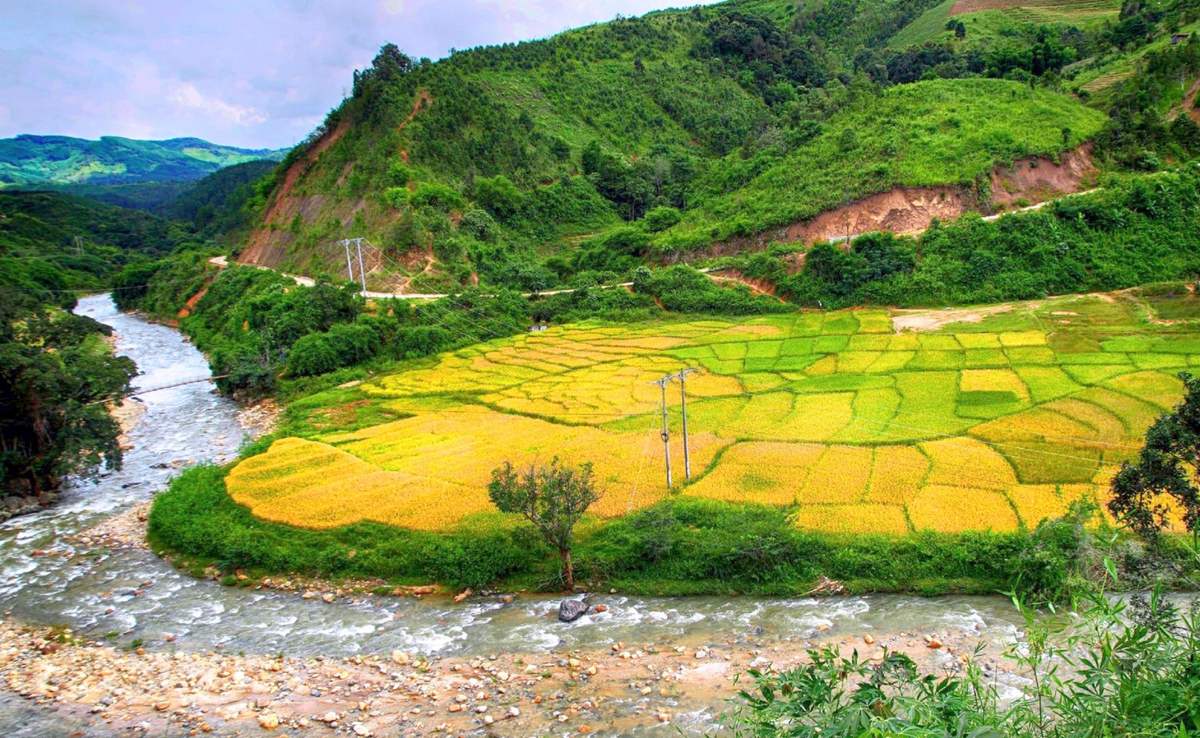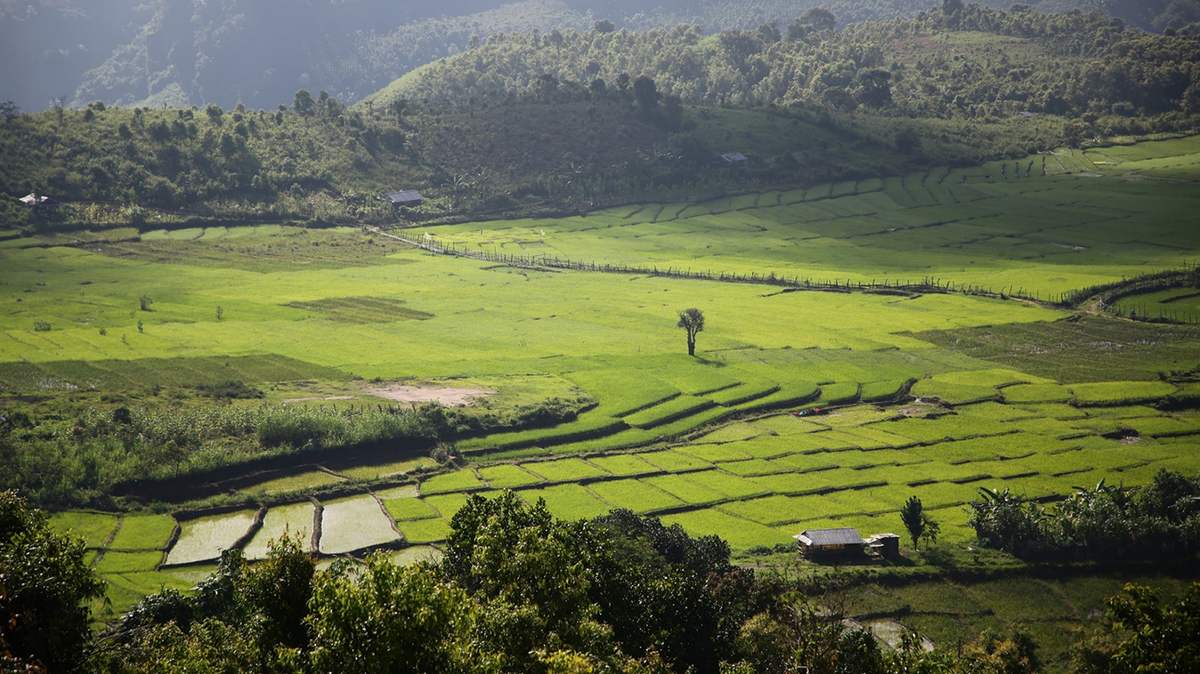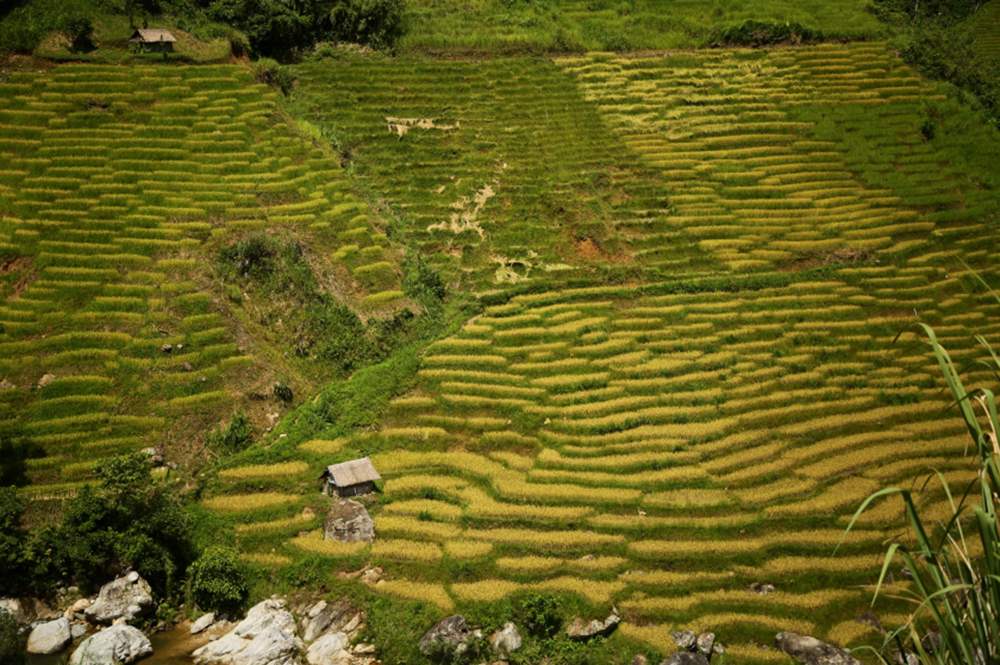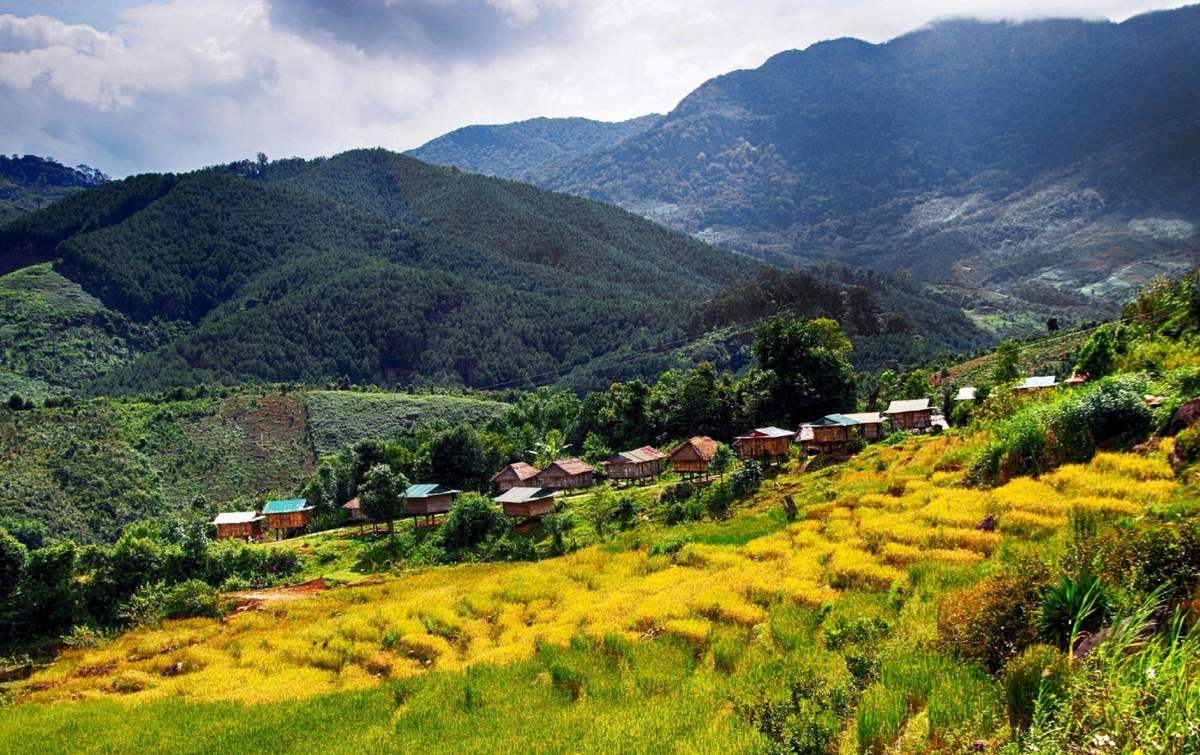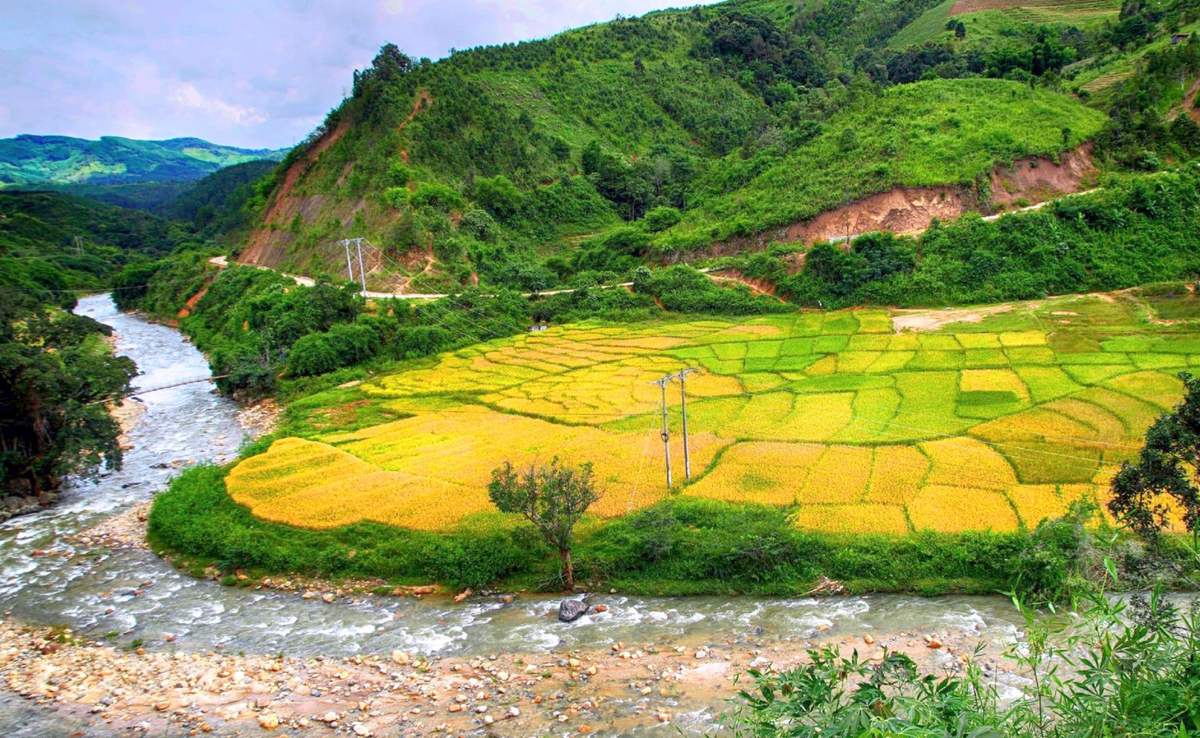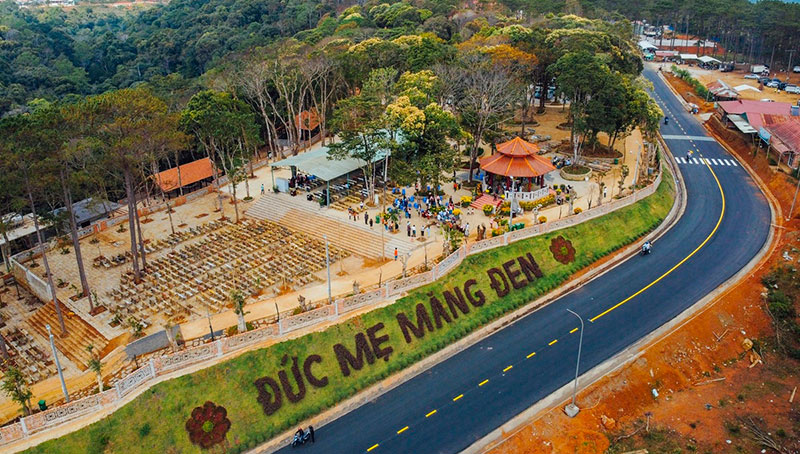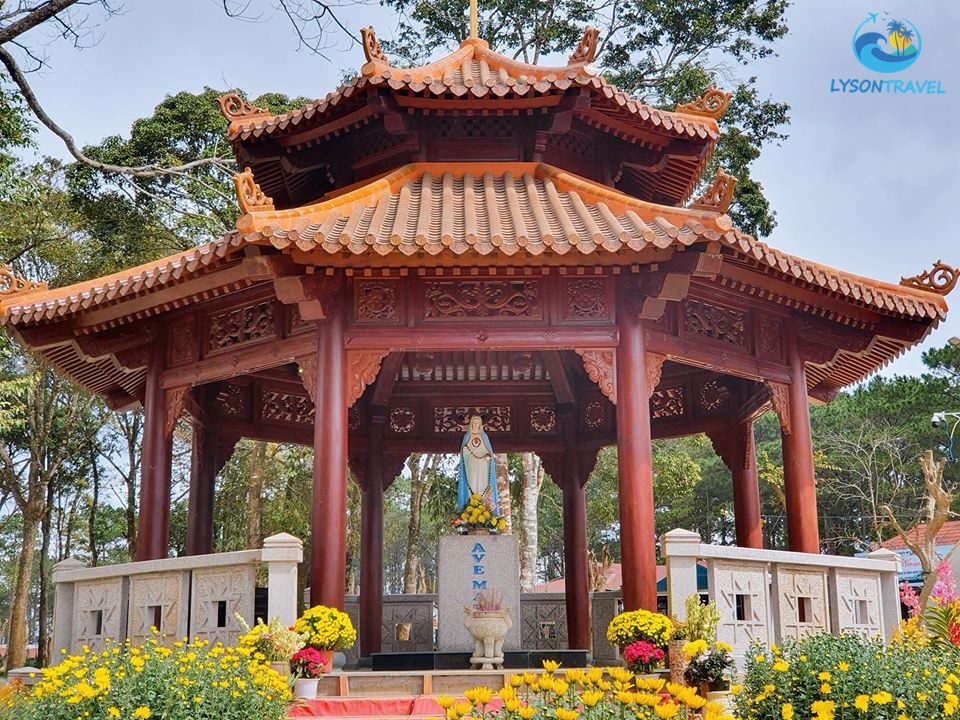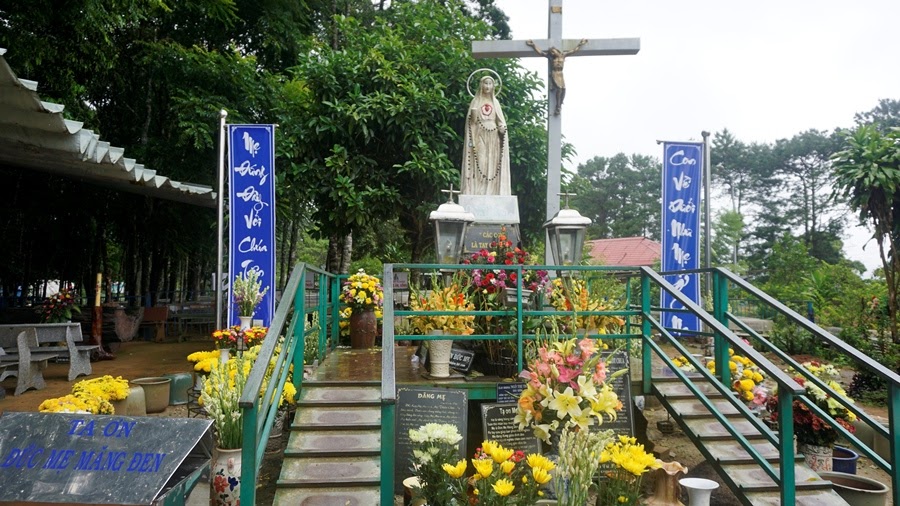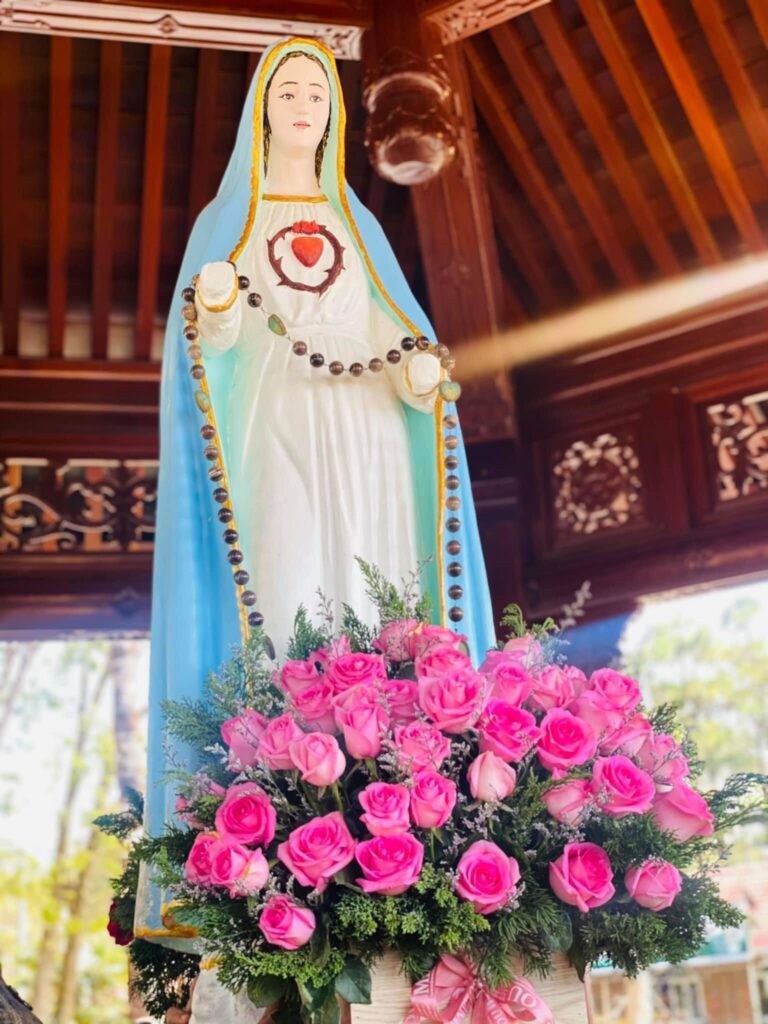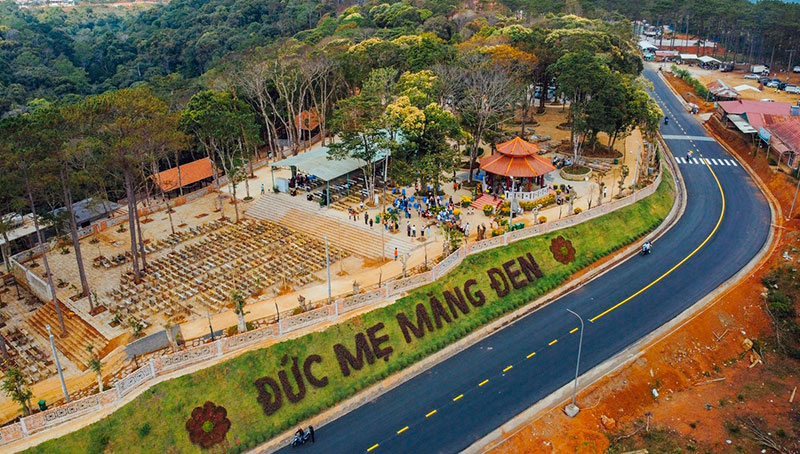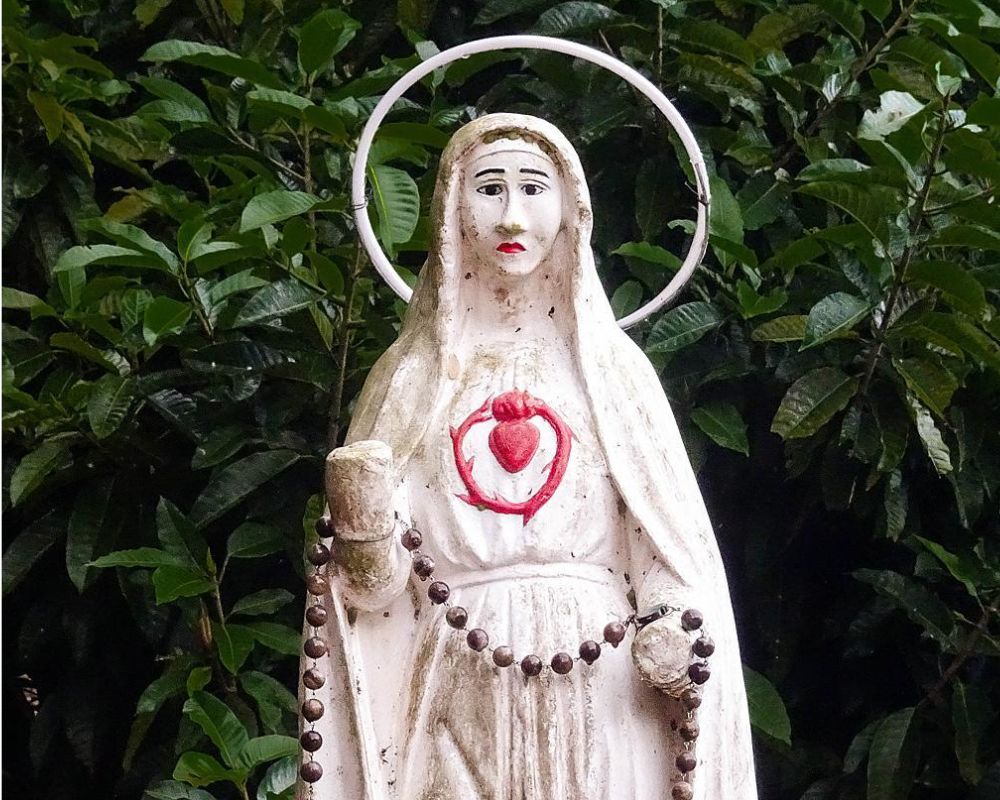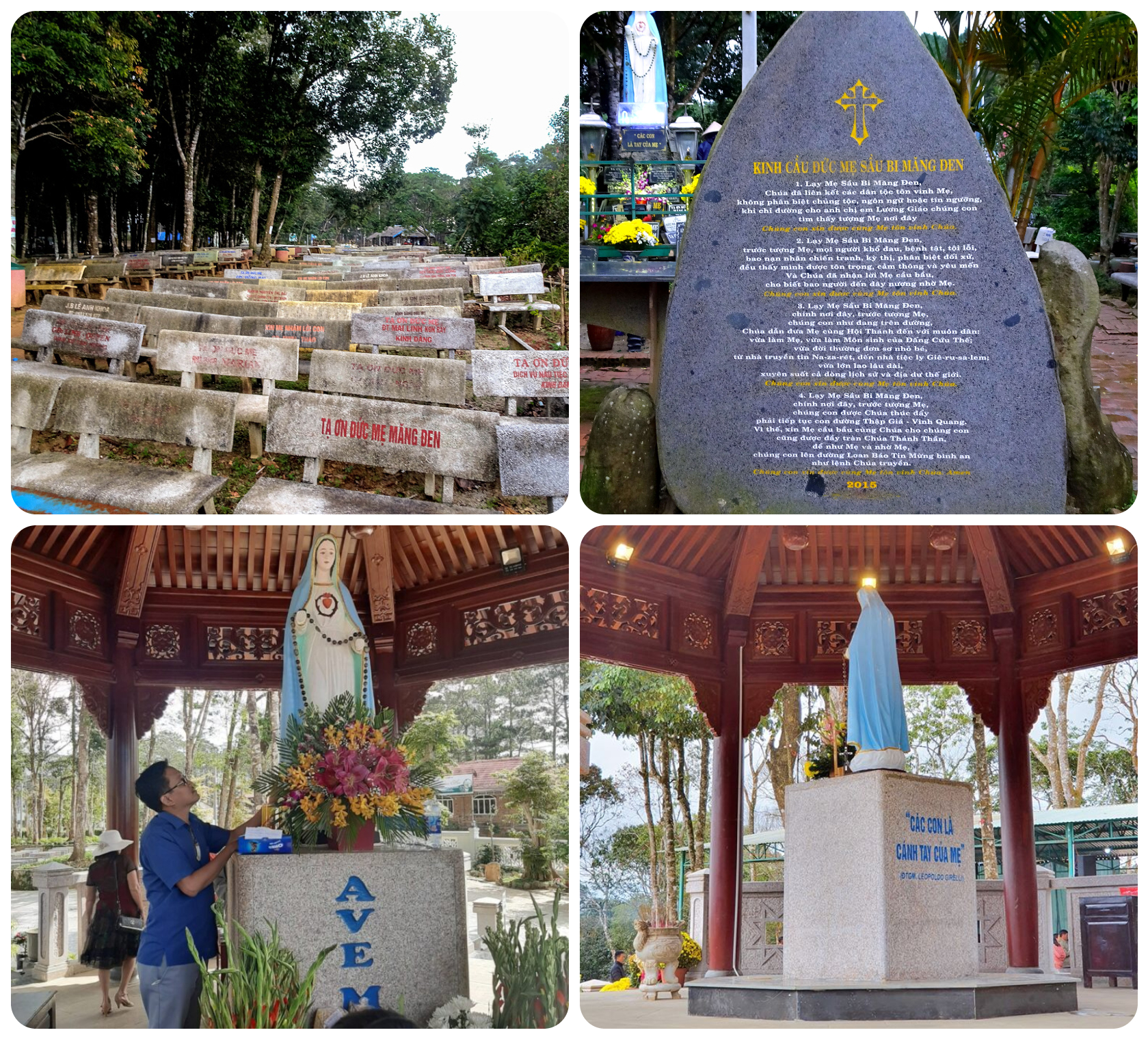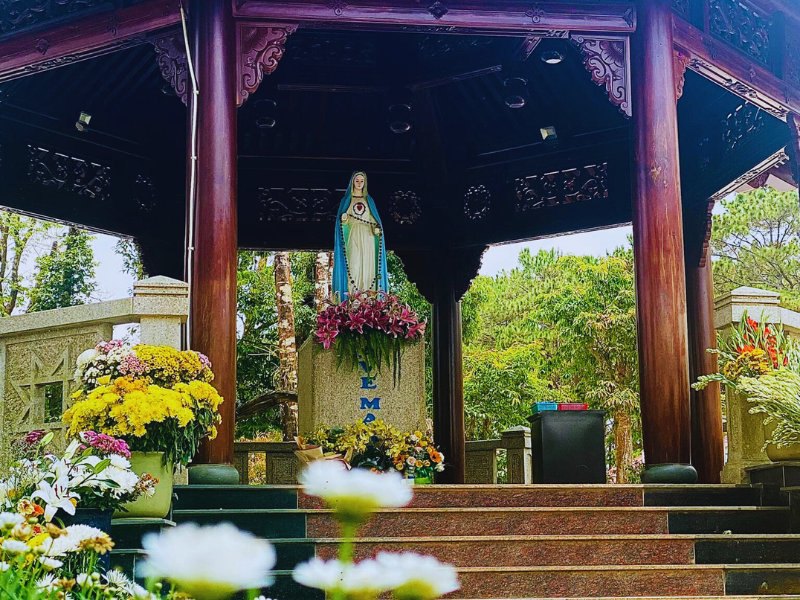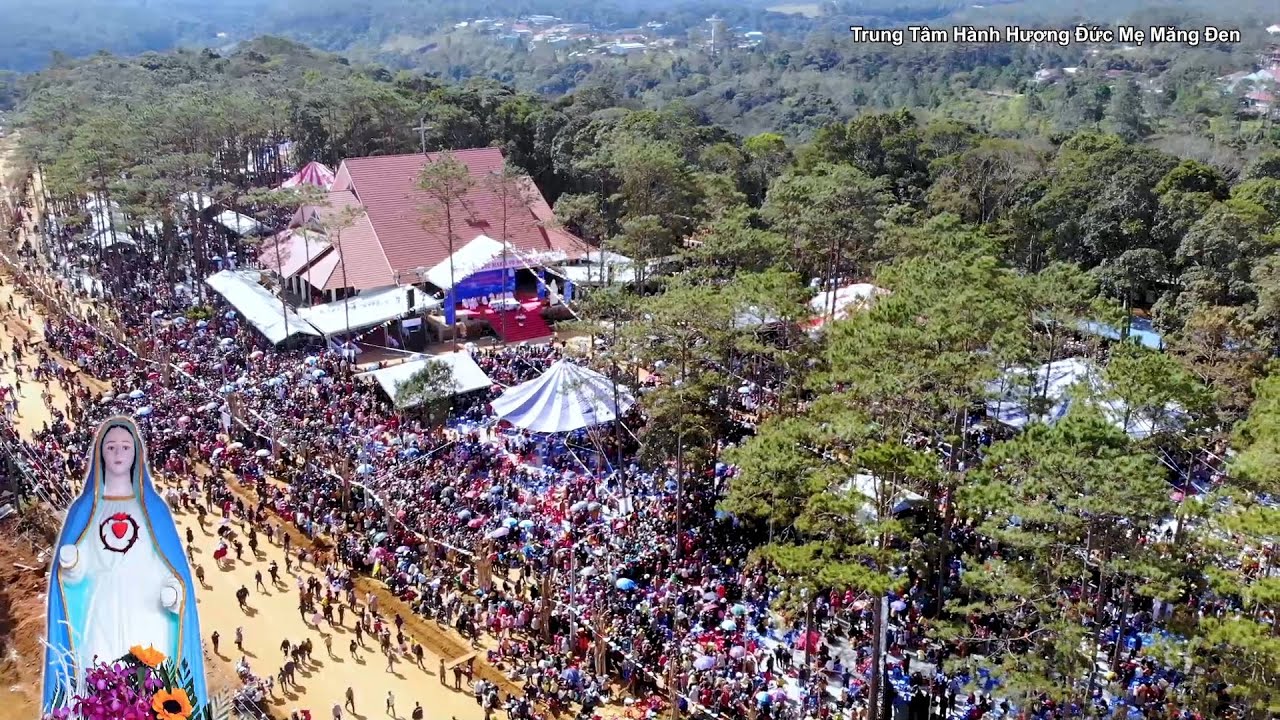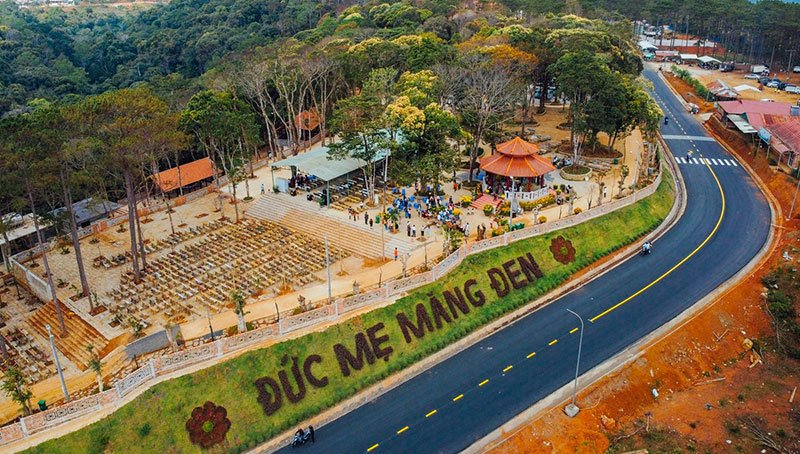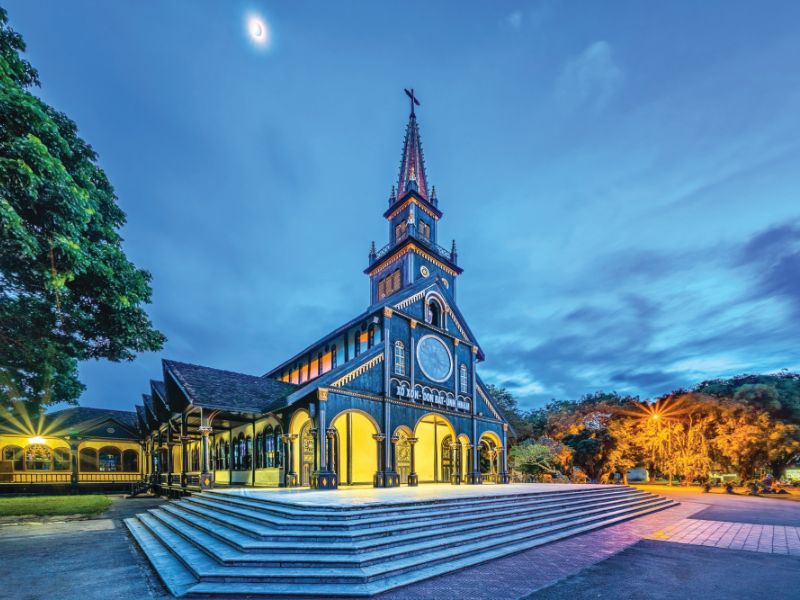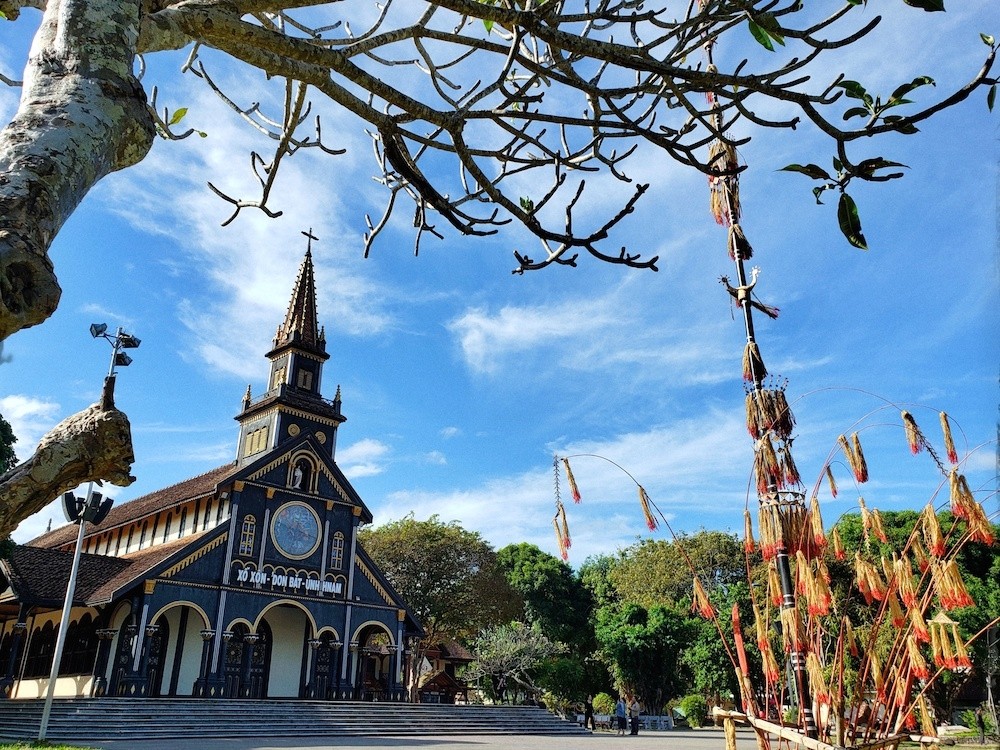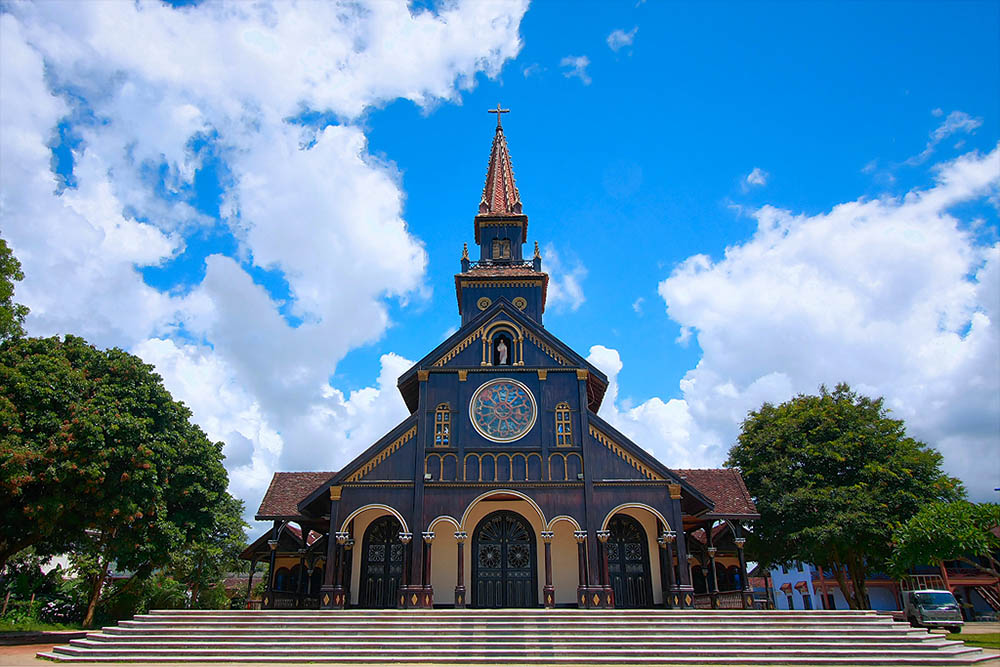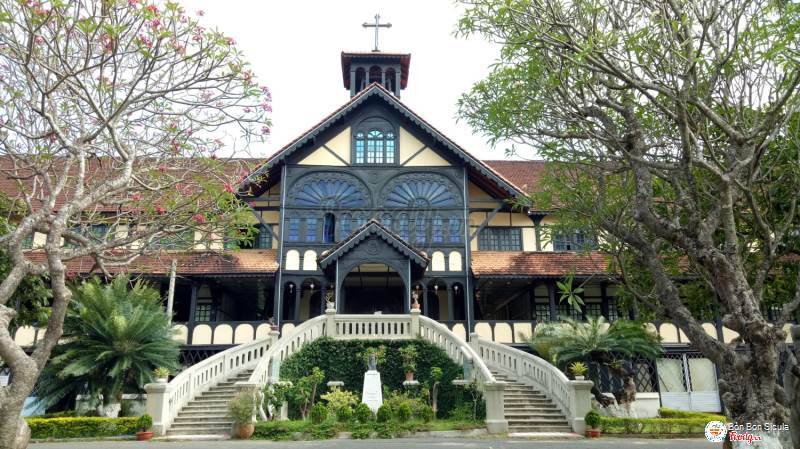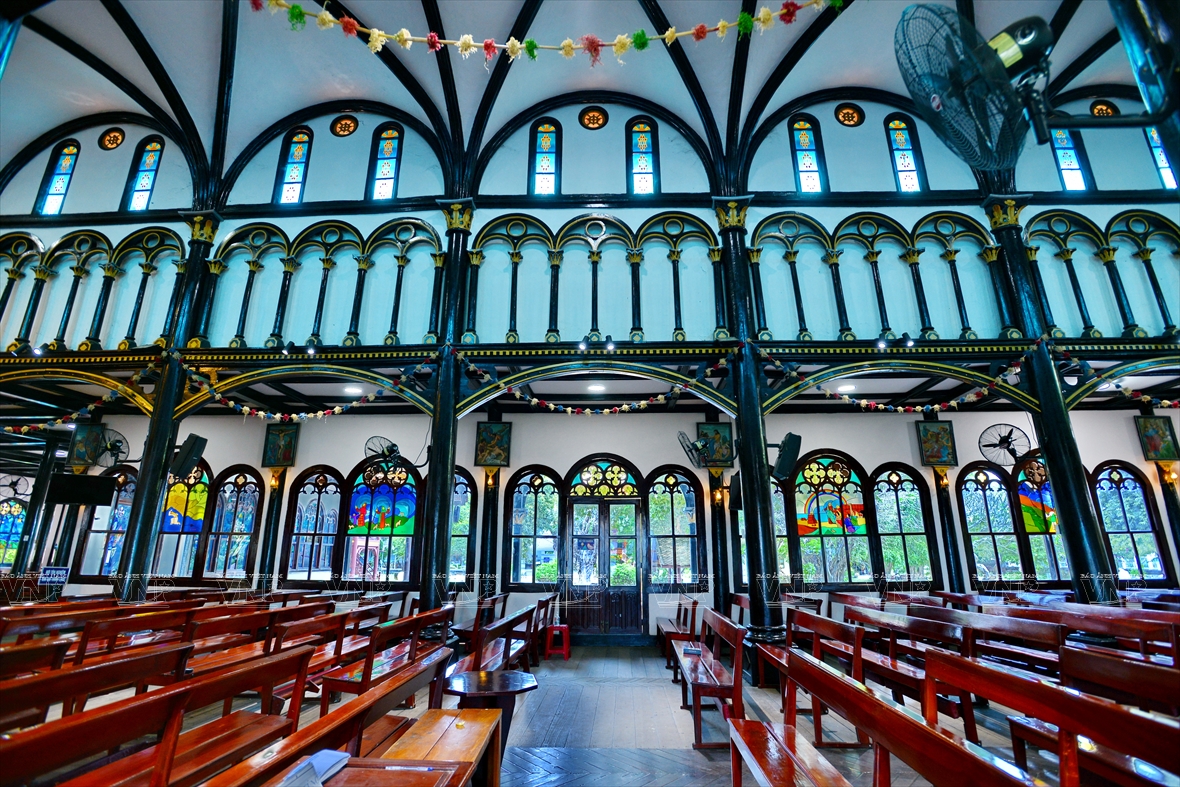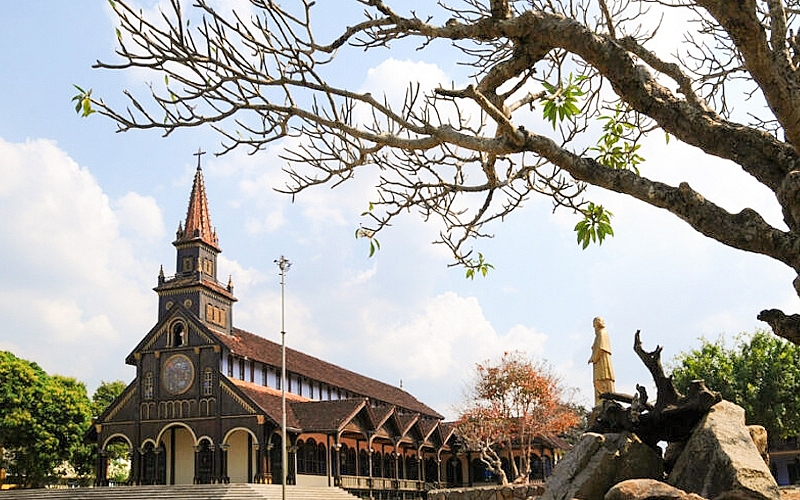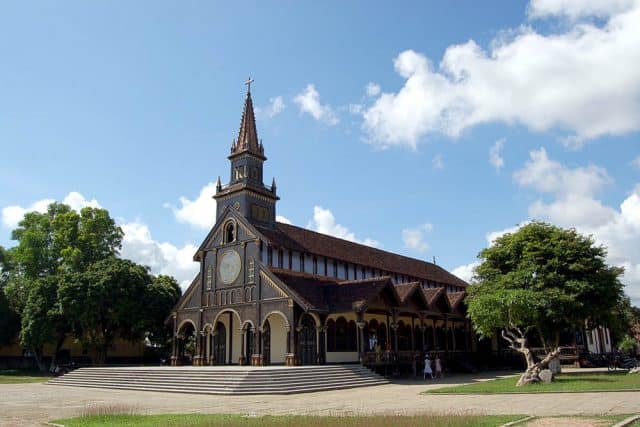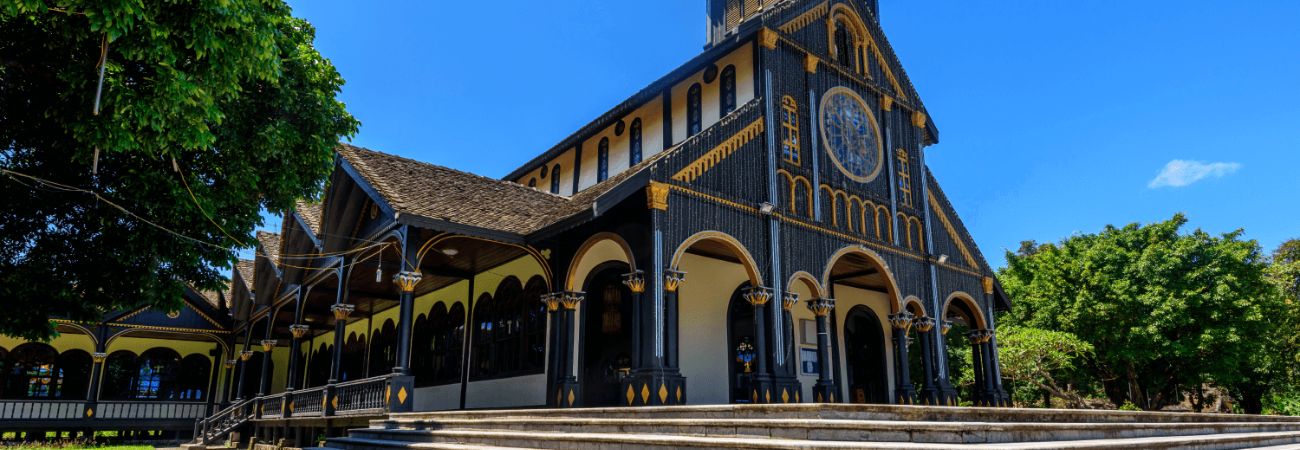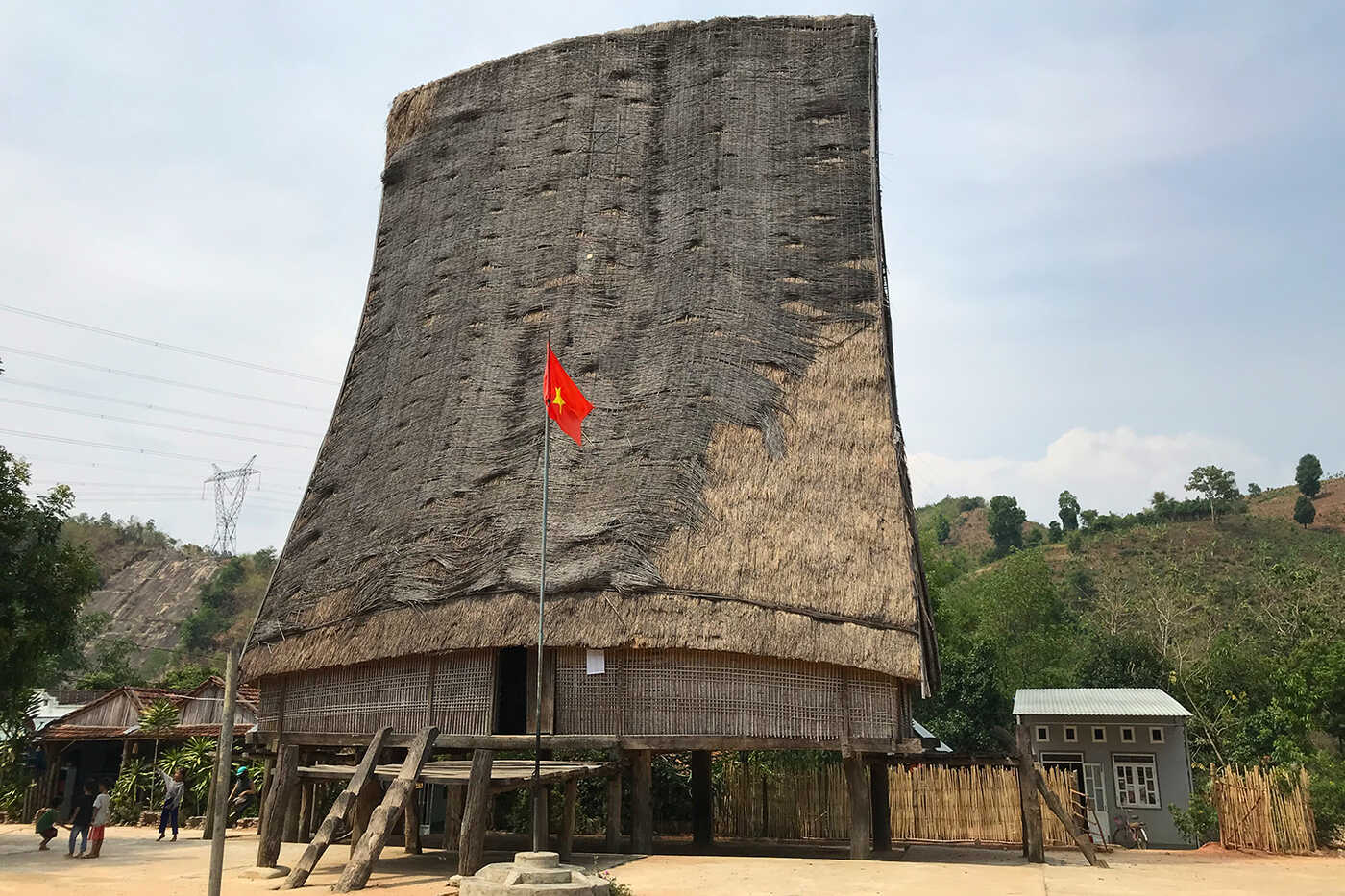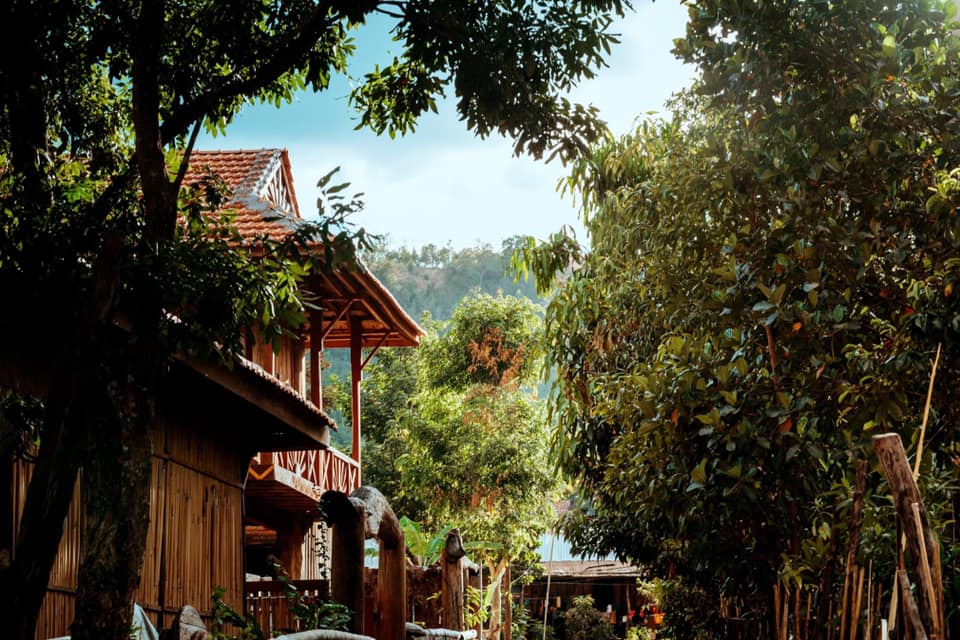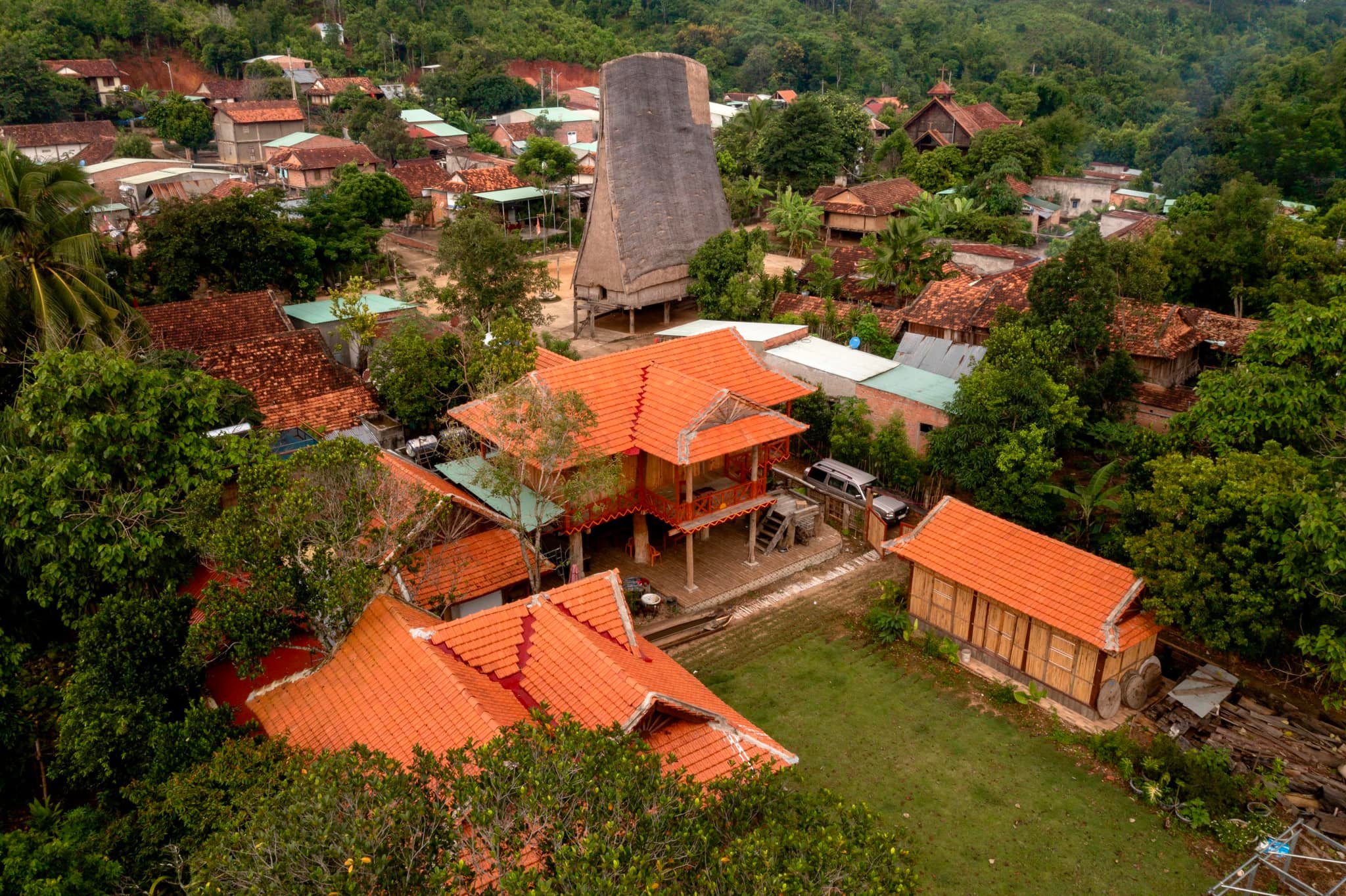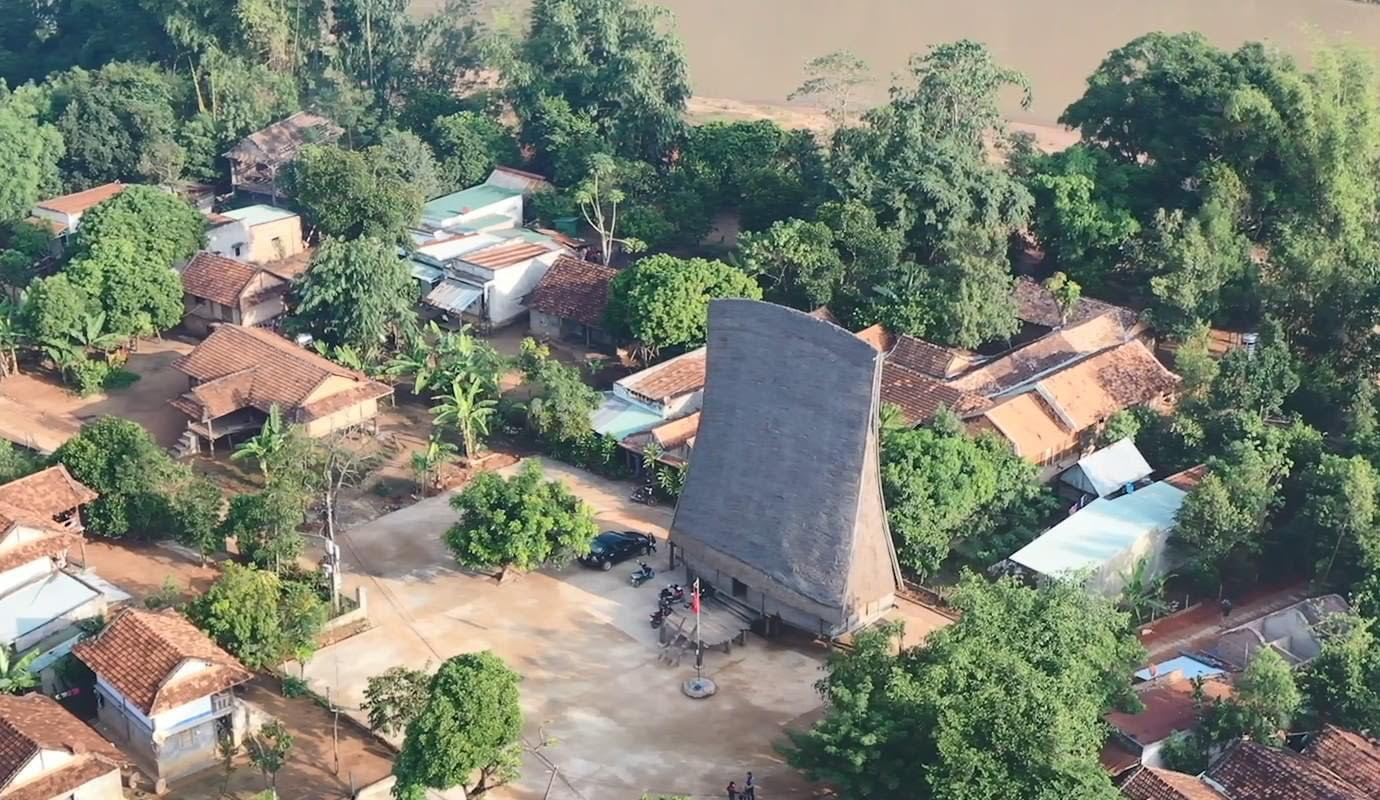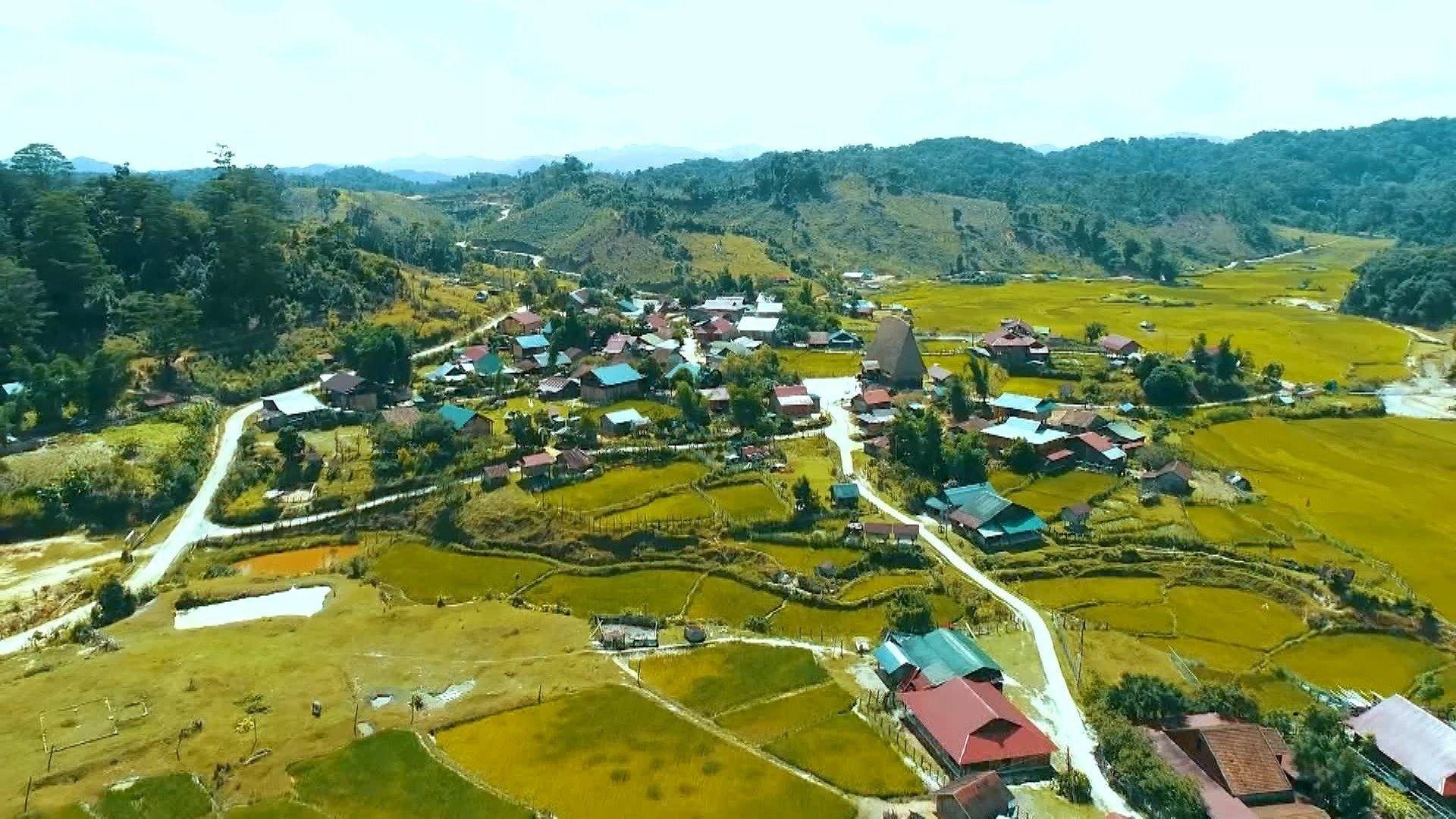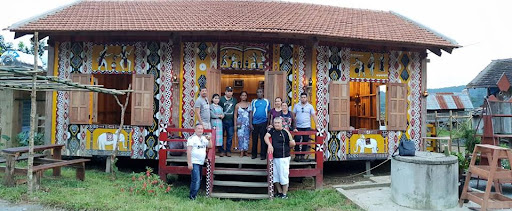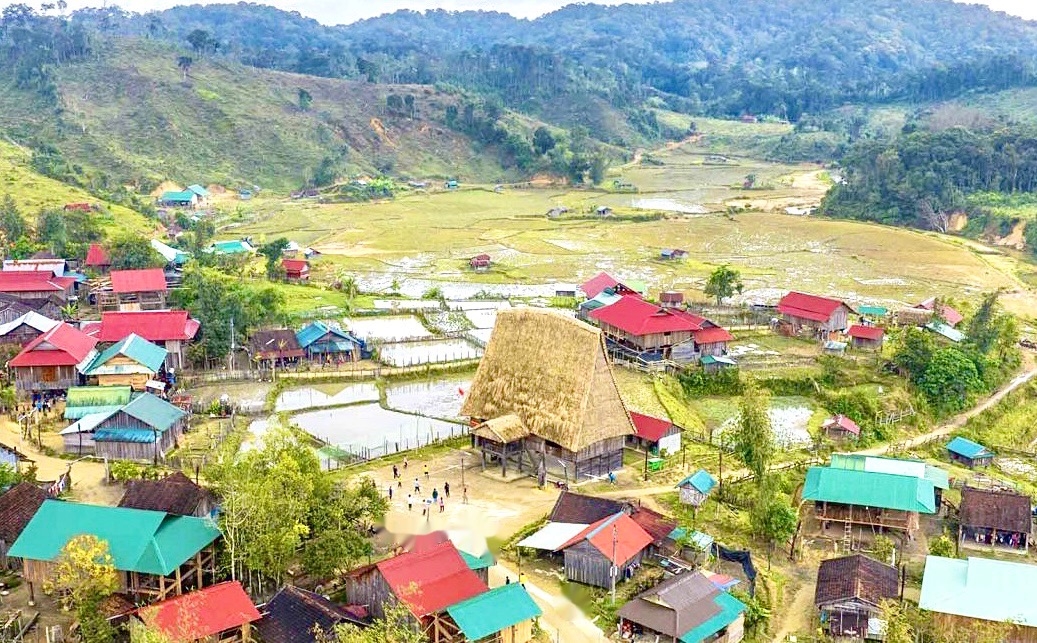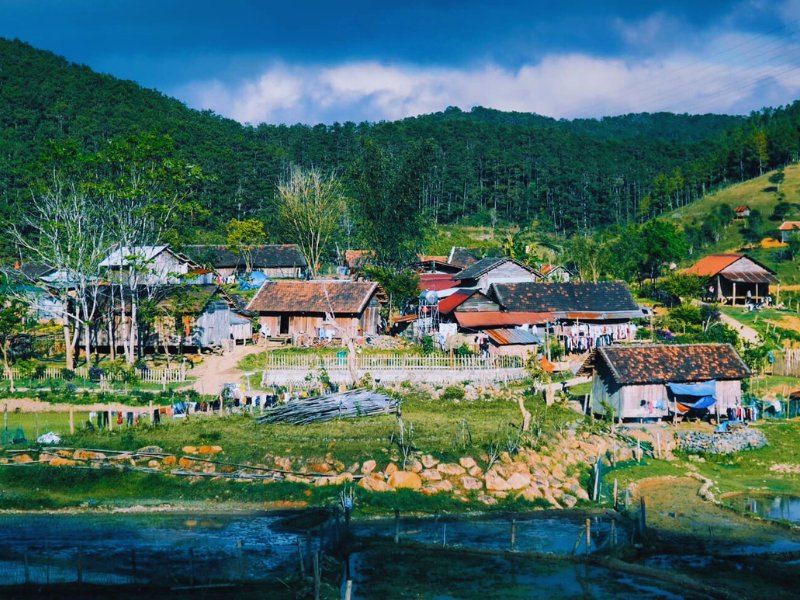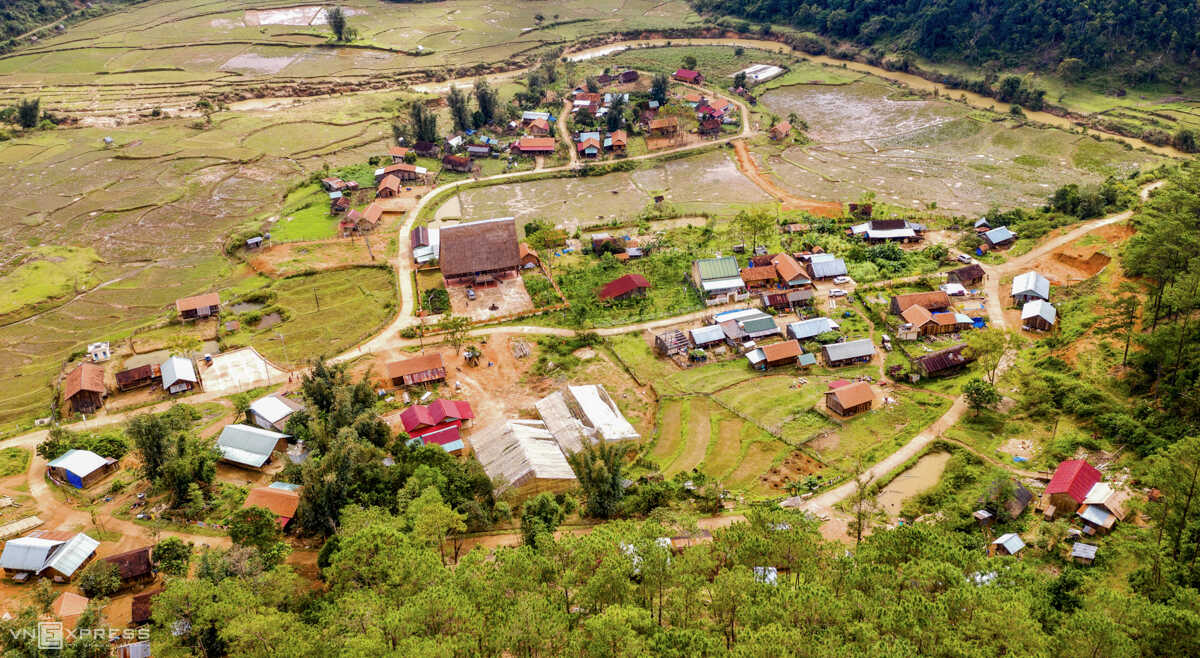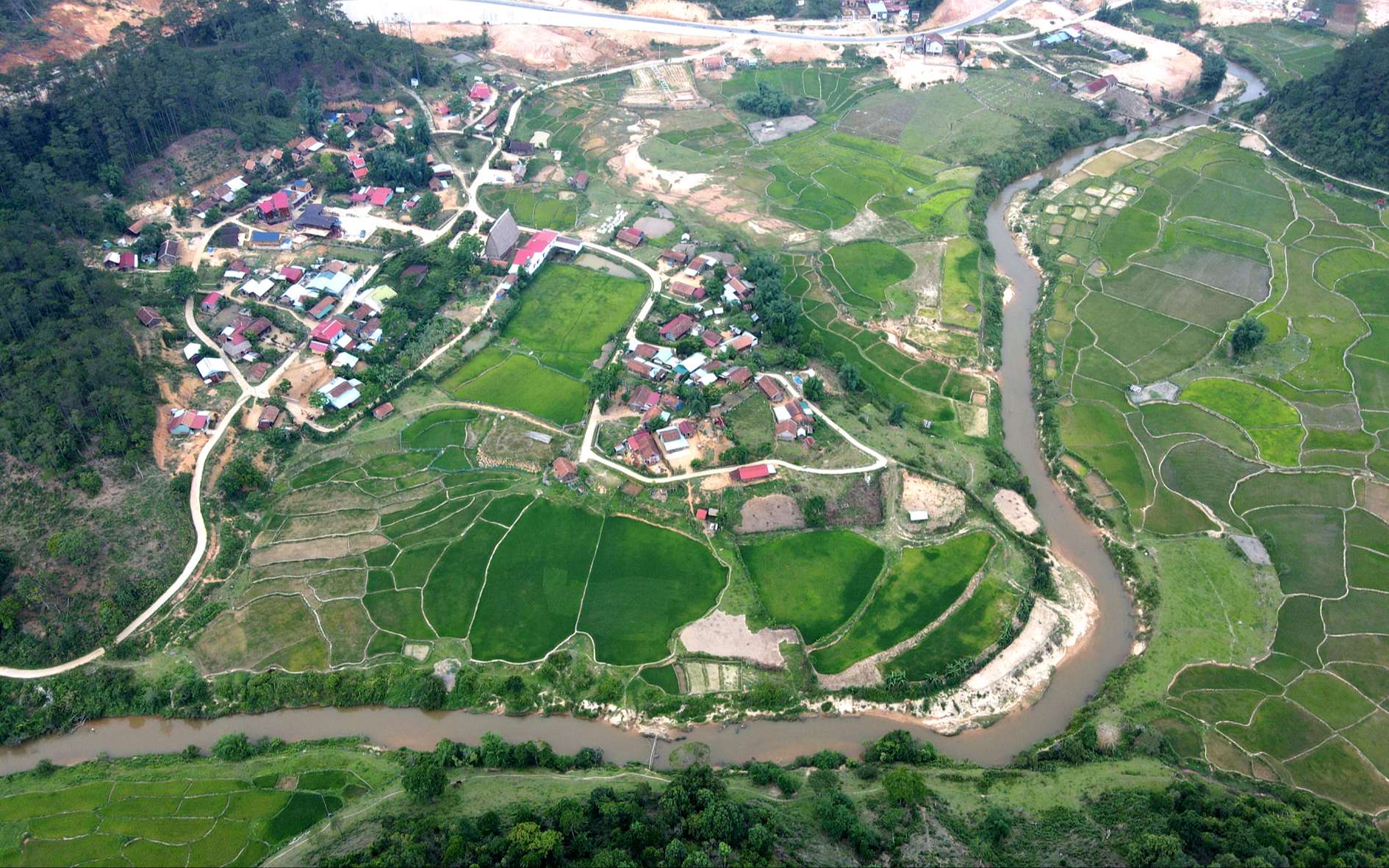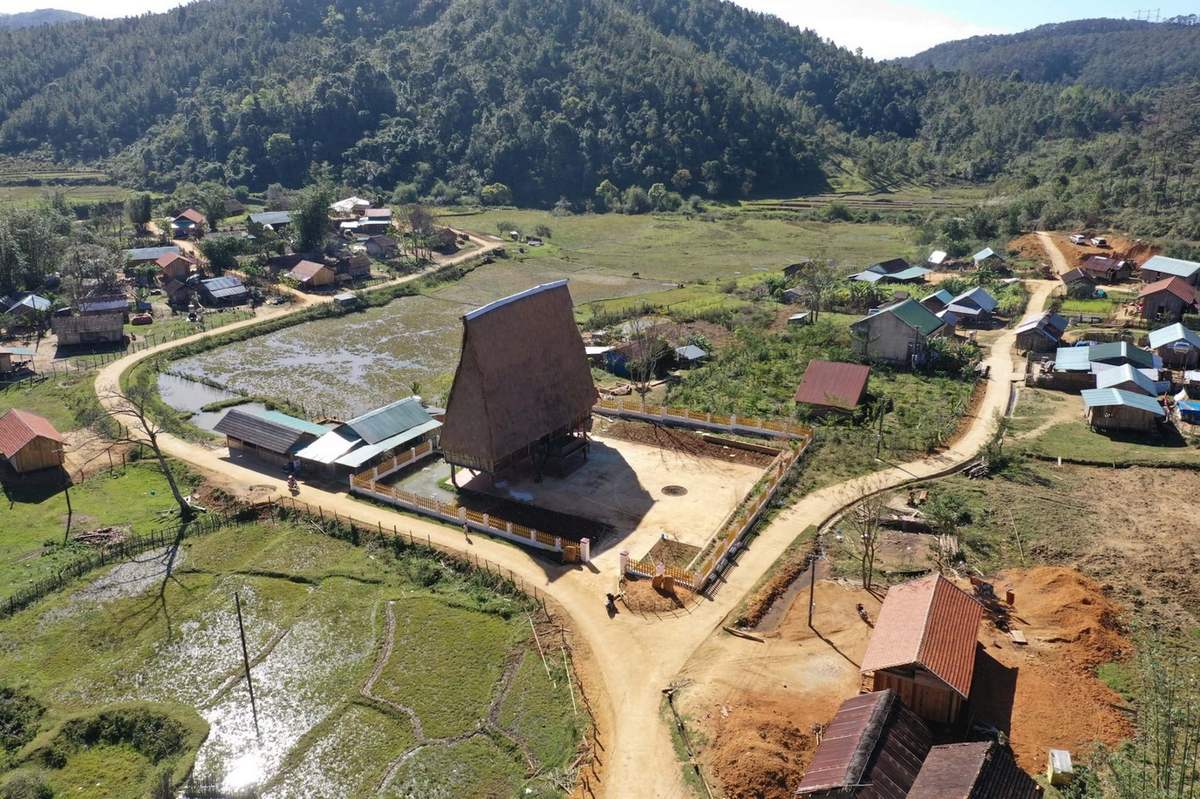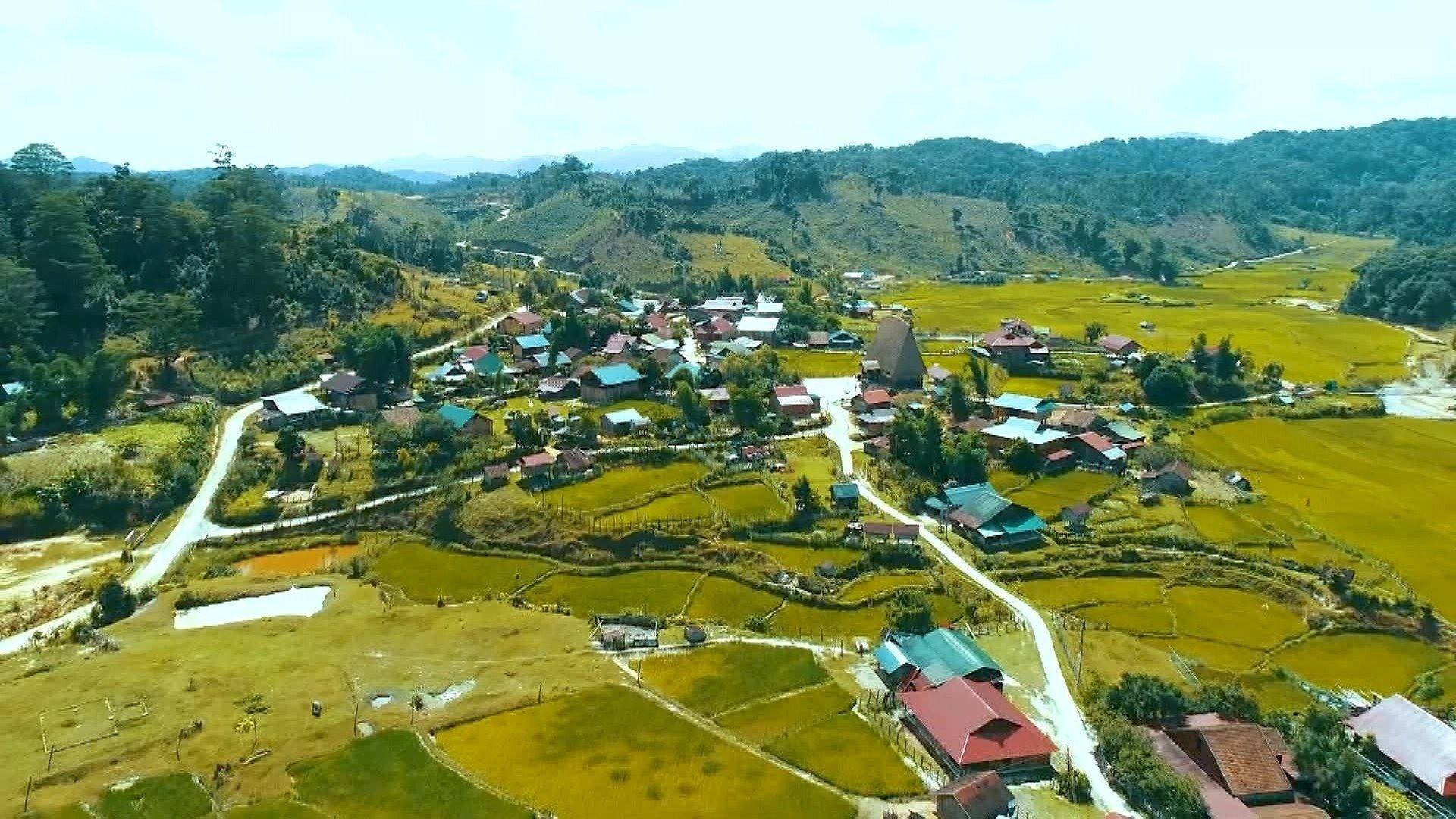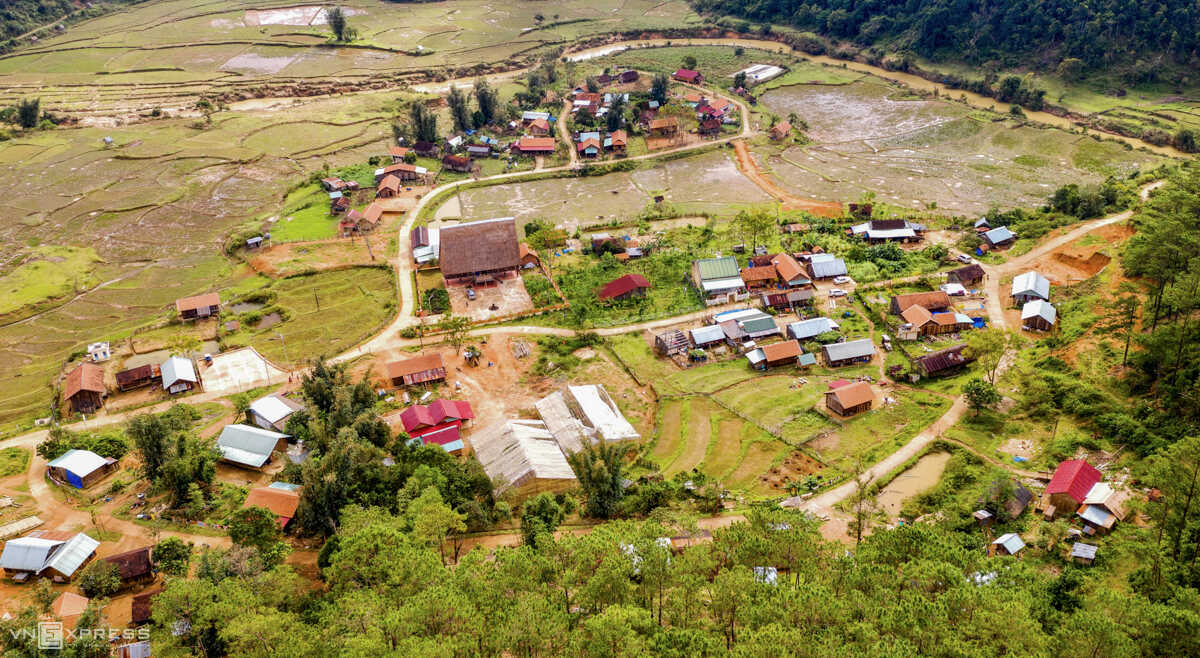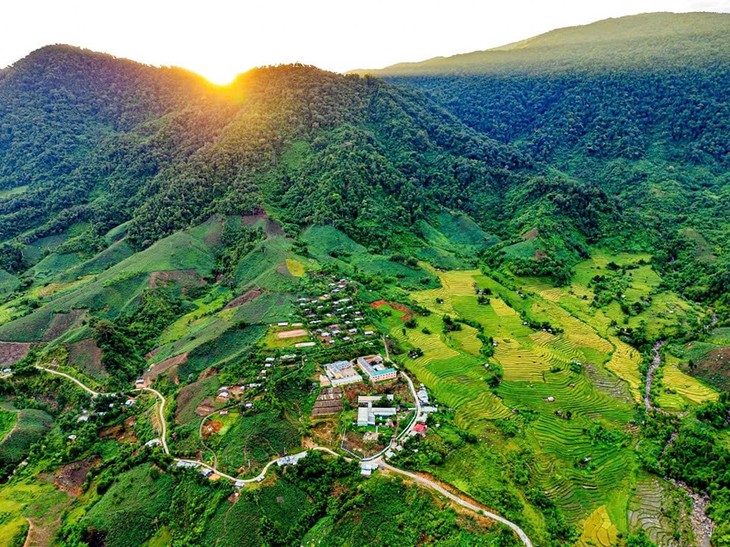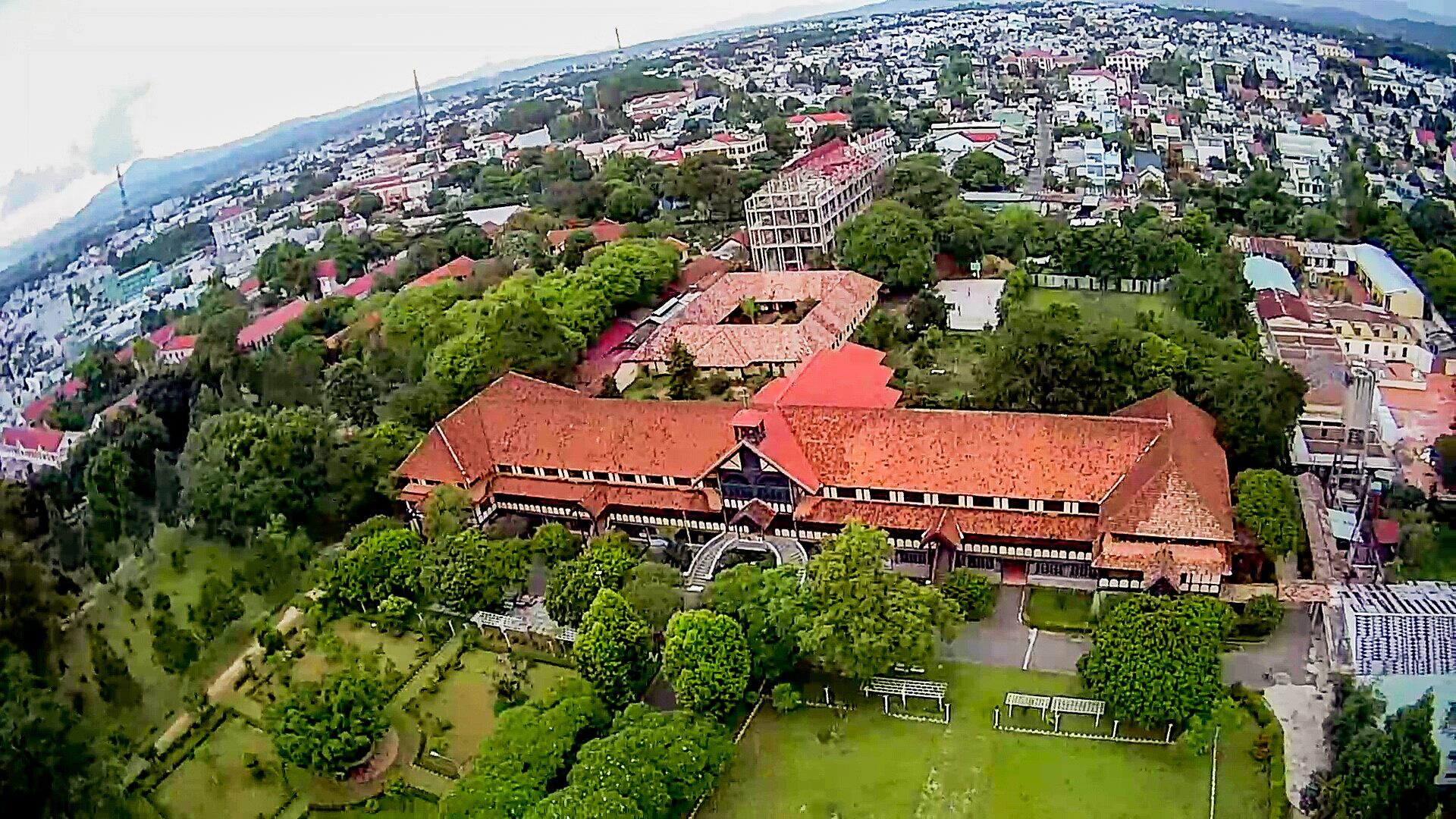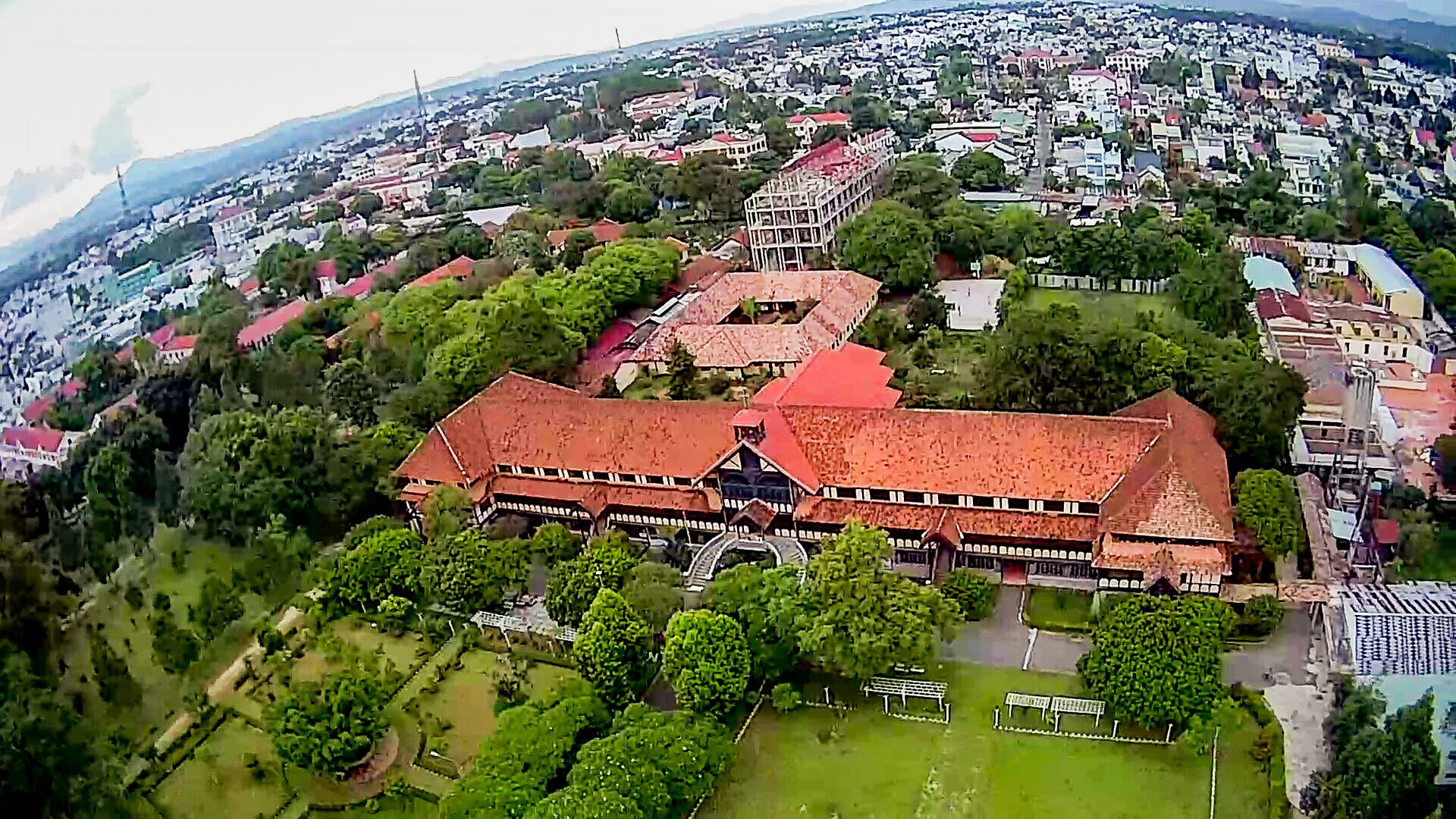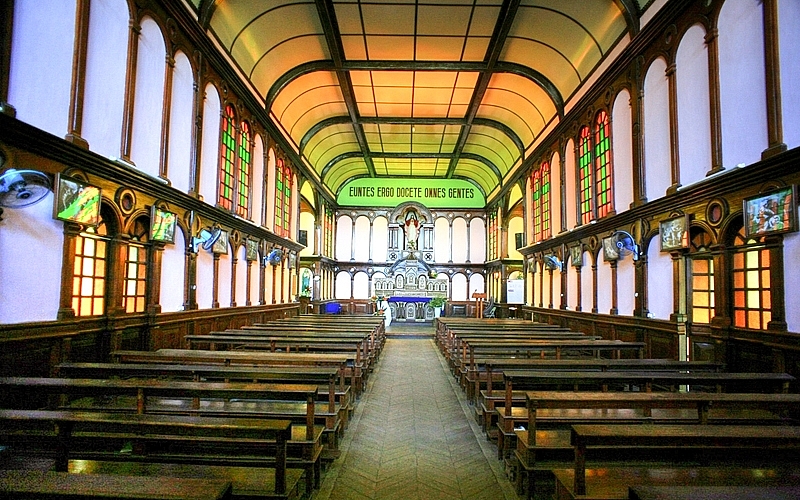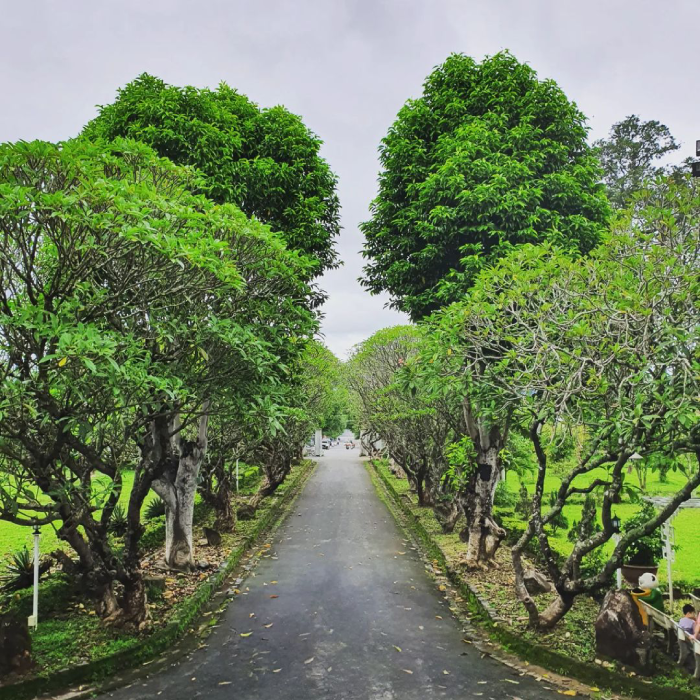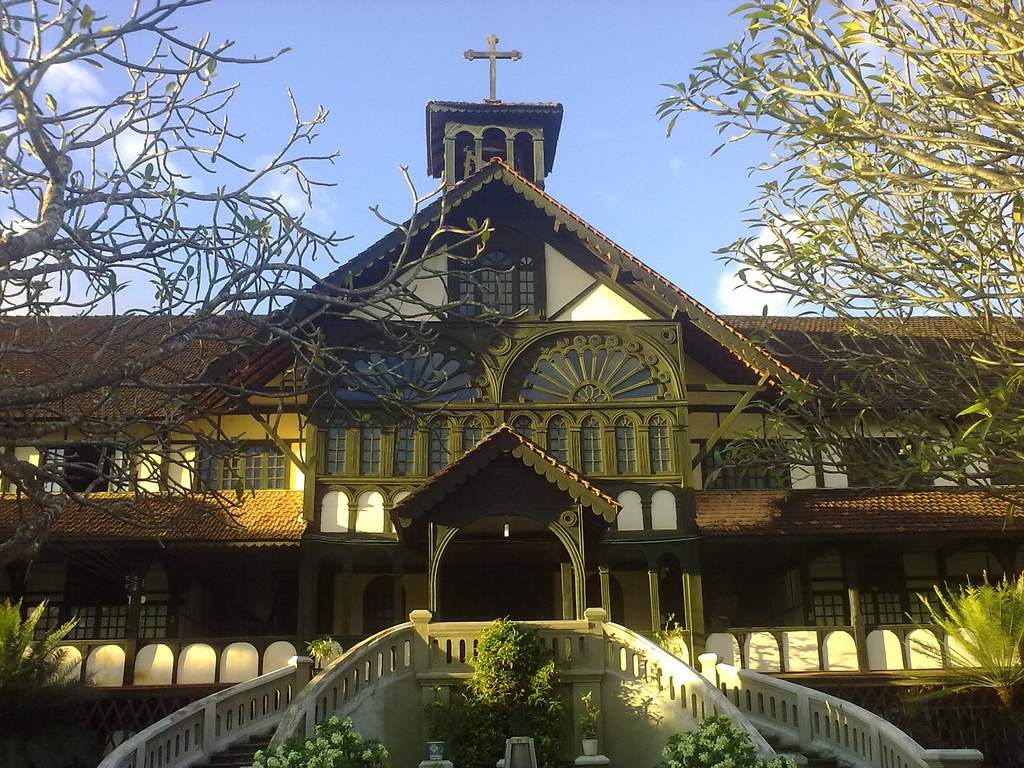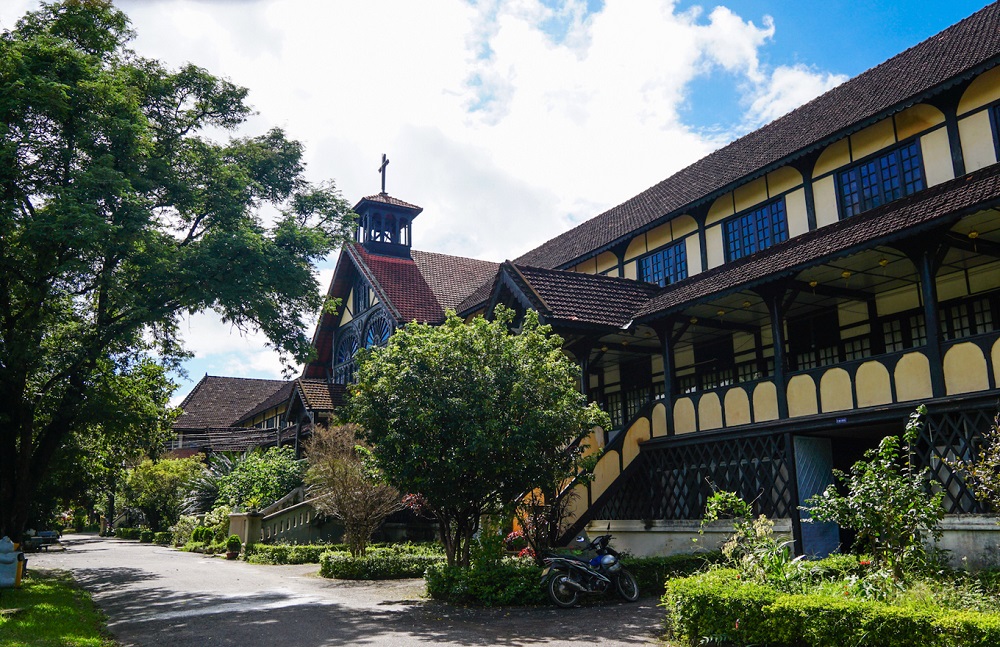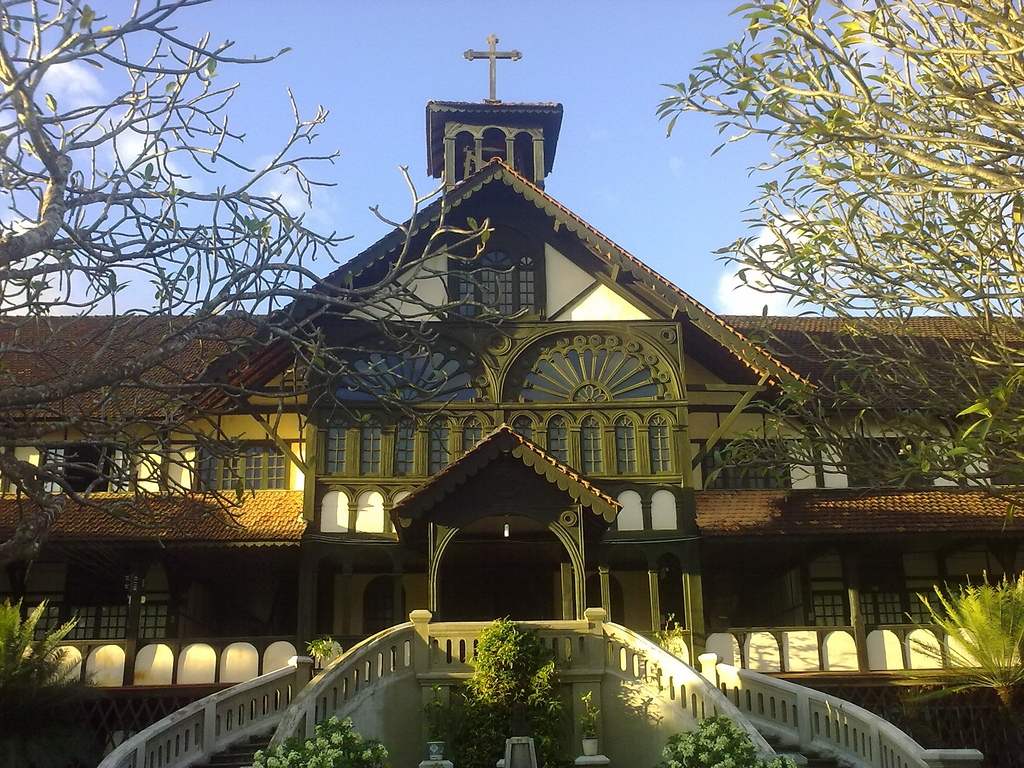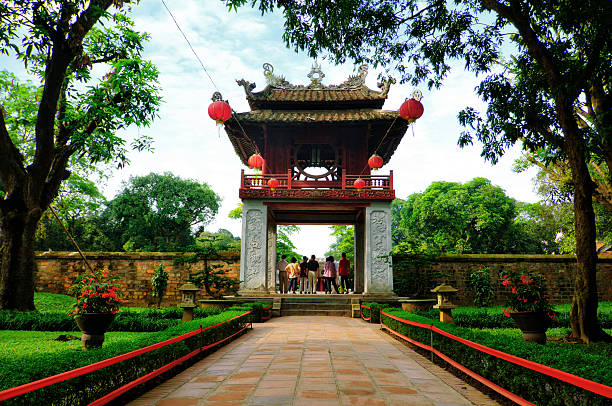On the tourist map of the Central Highlands provinces, there is an address that few tourists miss, which is Kon Tum Cathedral (No. 13 Nguyen Hue Street, Kon Tum City), an ancient church more than 100 years old. made of beautiful wood, worthy of being ranked among the masterpieces of wooden Catholic architectural works in Vietnam and Southeast Asia. Since the mid-19th century, following in the footsteps of Western missionaries, Catholicism began to be present in the Central Highlands, including Kon Tum. In the early days, worship facilities in this country were mostly small-scale, made of wood, thatch, bamboo, leaves... Only later, when the number of parishioners increased, did people consider built large churches, including Kon Tum wooden church. According to historical sources, the Kon Tum wooden church was presided over by Father Joseph Décrouille, in charge of the Kon Tum parish, and started construction in mid-March 1913 and was completed in early 1918. The church's construction process spanned many years. through many hardships, even stagnating at times due to the time World War I broke out. Previously, it took people up to 3 years to prepare, starting with hiring skilled workers to go into the forest to cut wood and then using elephants to pull it back, then sending people back to areas such as Quang Nam, Quang Ngai, and Binh Dinh. ... find good workers to build. The reason it is called a wooden church is because the main material used to build this church is red wood, a precious wood abundant in the mountains and forests of the Central Highlands. All structures from columns, rafters, to floors are made of wood and glued together with tenons without using nails. The ceiling, walls and partitions are plastered with a straw-mixed soil material in the traditional style of Central Vietnamese houses, with absolutely no reinforced concrete or lime mortar. Explaining this, in a report sent to the Paris Missionary Society in 1913, right at the beginning of construction of the church, the Apostolic Vicar Bishop of Dong Dang Trong Grangeon wrote as follows: "Stone cannot be used." Like bricks for construction, only wood can be built with high quality and the architect said that this church in Ba Na has the appearance of a cathedral. Overall, the church is designed in Roman architectural style combined with the stilt house style of the indigenous Ba Na people. This is considered the pinnacle of the combination of Western culture and national identity of the Central Highlands region. Looking from the outside, the building is a tall, majestic building that stands out with the dark and timeless colors of wood and tiles. The front of the church has a 4-storey bell tower 24m high in the middle, creating harmony and balance for the entire building. The two-winged corridor is wide and long, the roofs are high and sloping like the communal roofs of the Ba Na people, firmly supported by round wooden columns. Inside the cathedral seems to be a completely different world with its long, soaring, airy and light-filled dome structure, making viewers truly overwhelmed by its majestic and splendid beauty. The 12m high columns placed firmly on stone bases rise up to support the entire central dome and the ceiling of the two-winged hallway, not only creating the grandeur of the building but also creating a feeling of open space on all sides. . In particular, the arched wooden truss system and the small columns above are delicately and seamlessly connected in a graceful and soft way, making the upper floor of the cathedral even more magnificent and splendid. On both sides, through natural light, stained glass windows designed in the vitraux style with drawings of biblical classics appear shimmering brightly. It can be said that every detail of the church's design, carving, decoration, color combination... is extremely sophisticated, proving the masterful skills of ancient artisans. There is an extremely interesting detail that shows that the artisans at that time were extremely skillful and sophisticated when placing a very large circular stained glass painting in the center of the cathedral, right above the main door. , facing the sanctuary to both let in light and decorate as a symbol of the sun shining directly inside. If you stand outside, it is difficult to imagine what the ancients drew on that glass painting. But inside, through the reflection of light, the painting appears bright and beautiful with images of the lively life of the ancient Central Highlands people with village scenes, communal houses, elephants pulling wood, rivers and streams. , majestic grandeur... Talking about the beauty of this cathedral, Bishop Jeanningros, who inaugurated the Kon Tum wooden church, wrote in a letter to the Paris Missionary Association in 1918: "This is a spacious and valuable building, was built Built with famous carpentry (precious wood - PV)... to replace the old thatched bamboo church that burned down by fire 7 years ago with this beautiful cathedral. After more than 100 years of wind and rain, the house Kon Tum wooden altar remains durable over time and seems to be more and more beautiful because of its rare antiquity and splendor. Today, coming to the mountain town of Kon Tum and visiting Kon Tum wooden church, visitors not only learn more about the history of the cathedral of Kon Tum Diocese, one of 27 Roman Catholic dioceses in Vietnam, and Not only is it the oldest diocese in the Central Highlands, but you can also admire one of the wooden masterpieces of Catholic architecture in Vietnam as well as Southeast Asia.
Kon Tum 529 view From November to April
Ngày cập nhật : 19/12/2024


 vn
vn en
en ja
ja ko
ko zh
zh


















